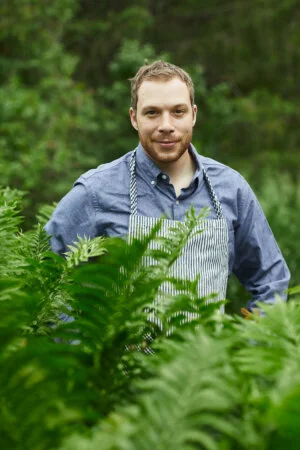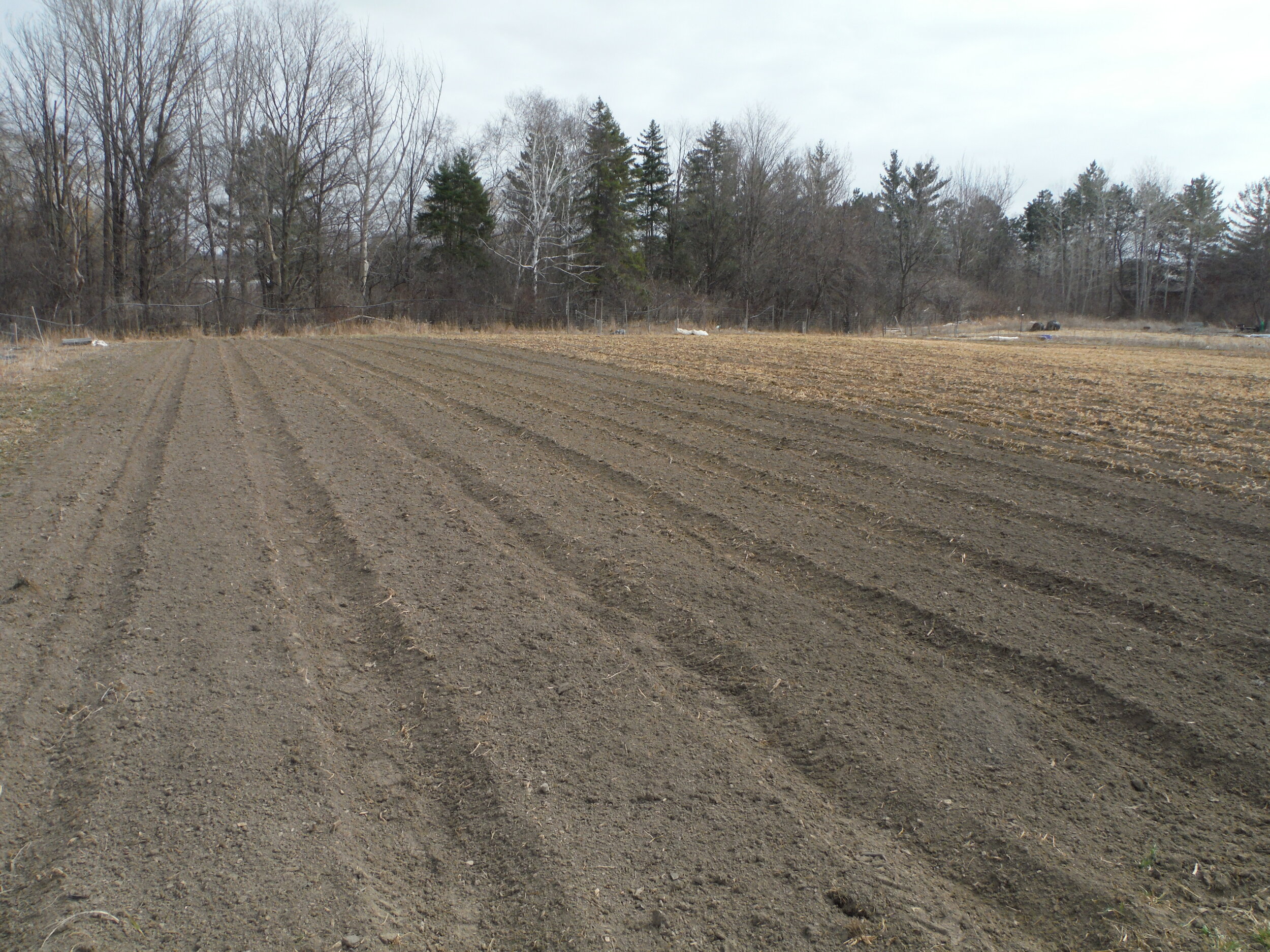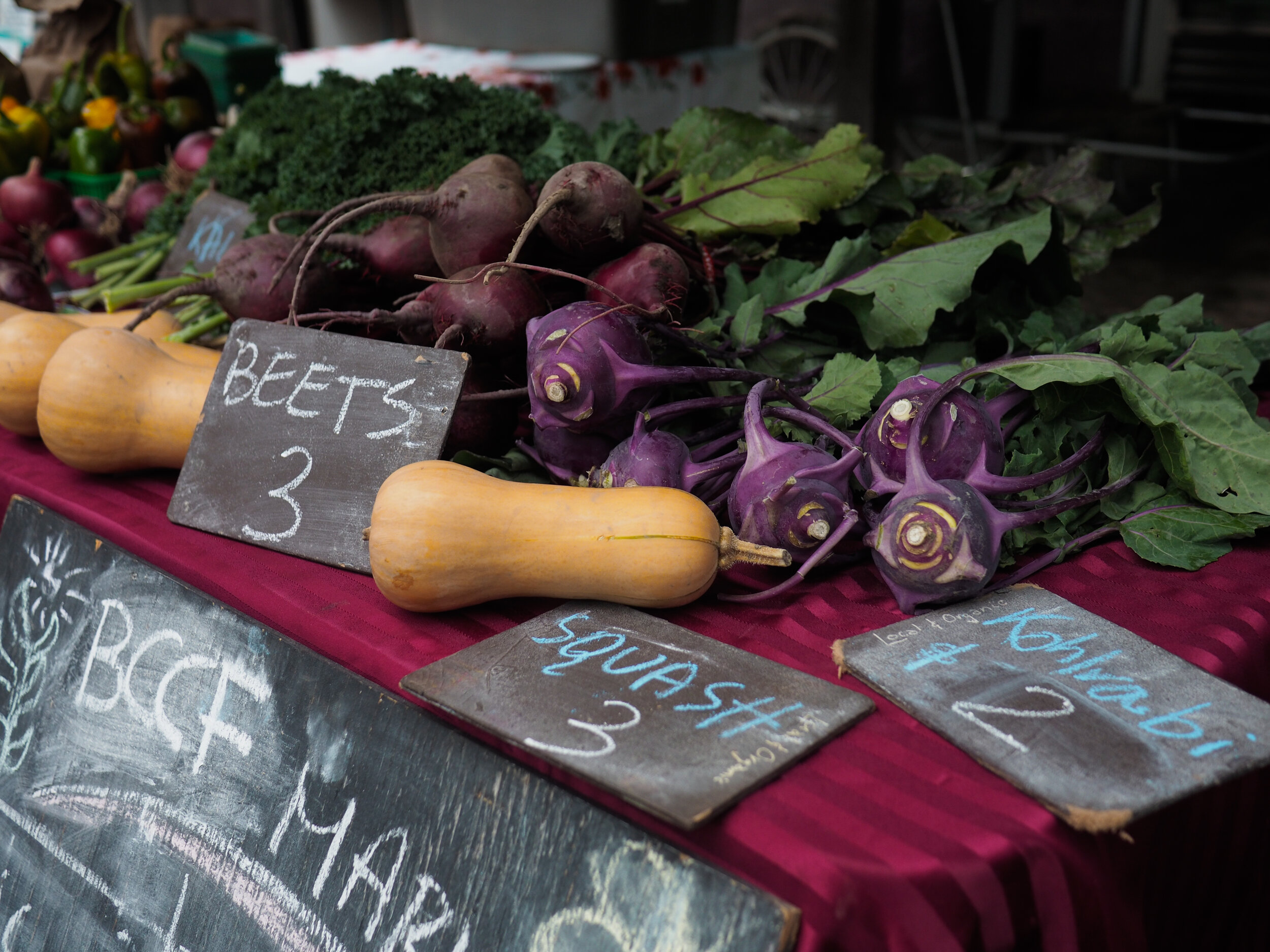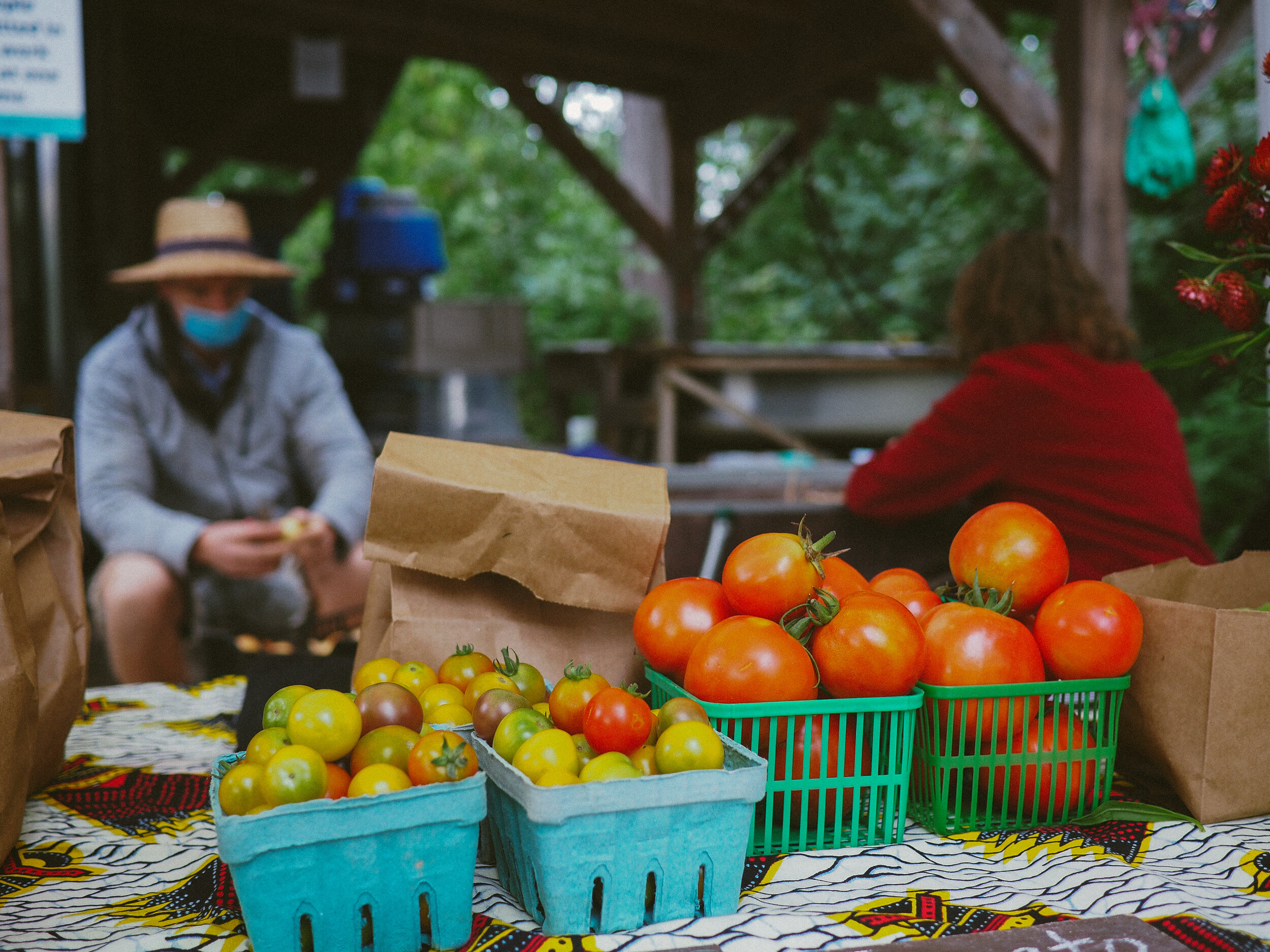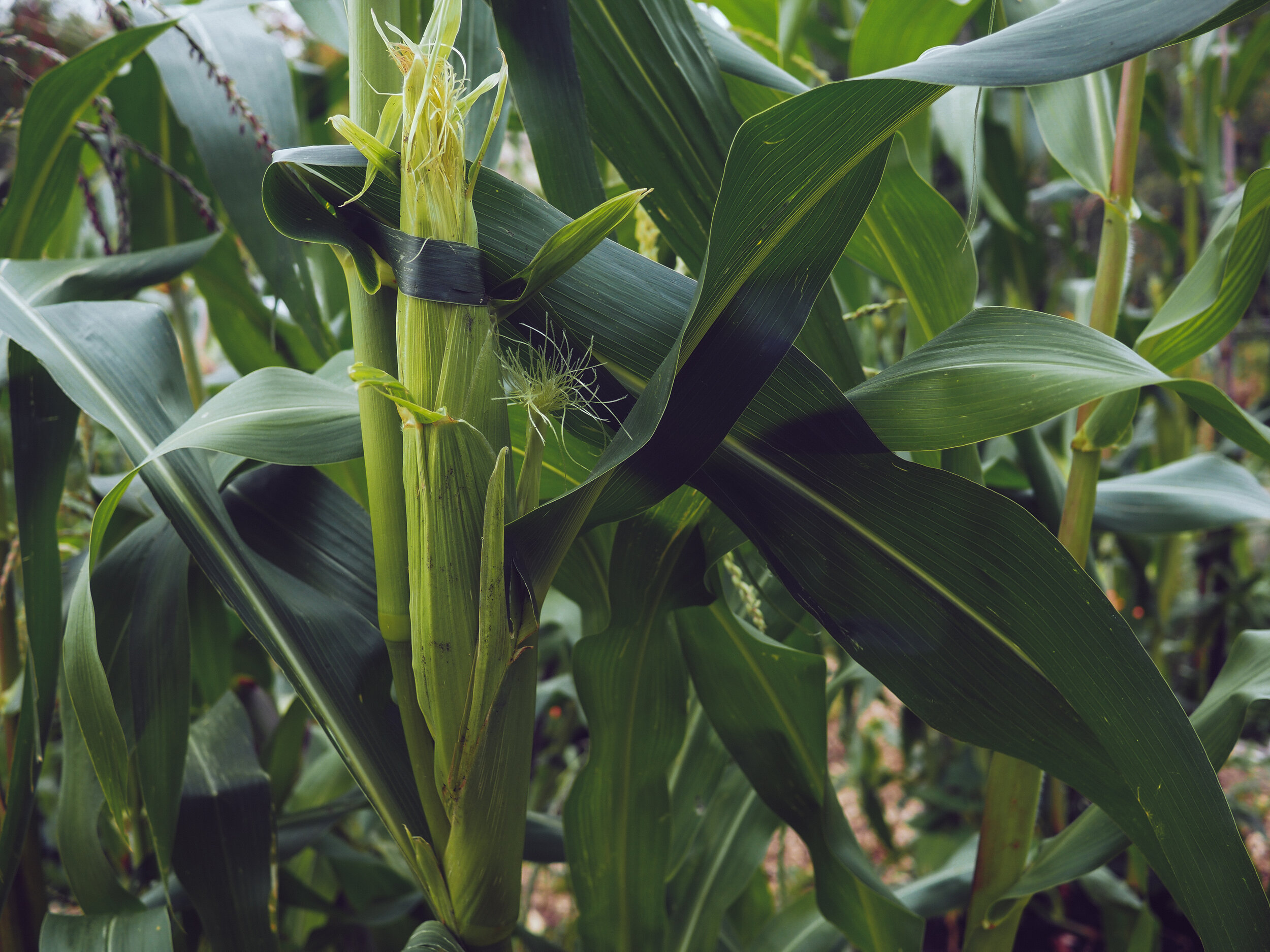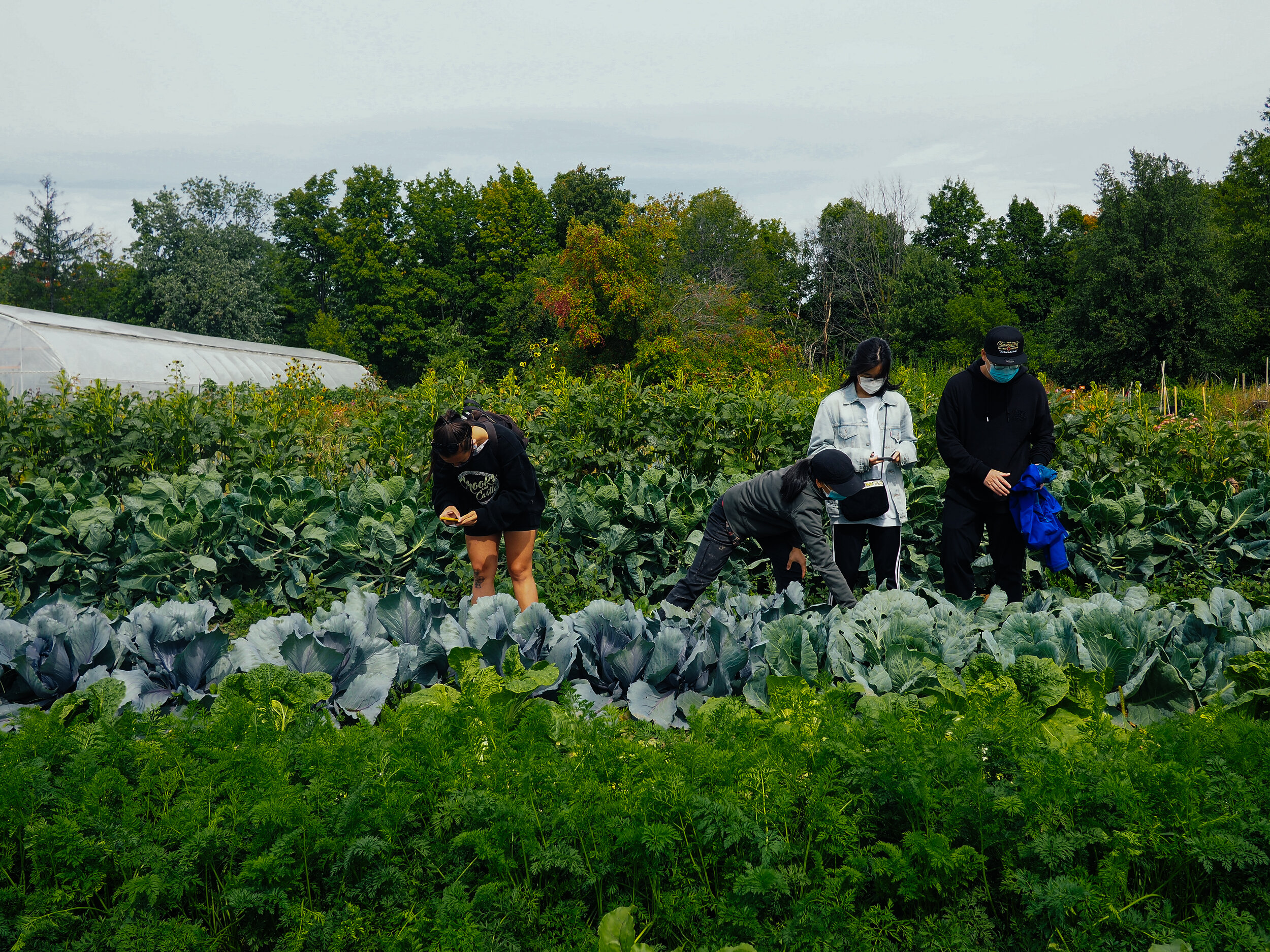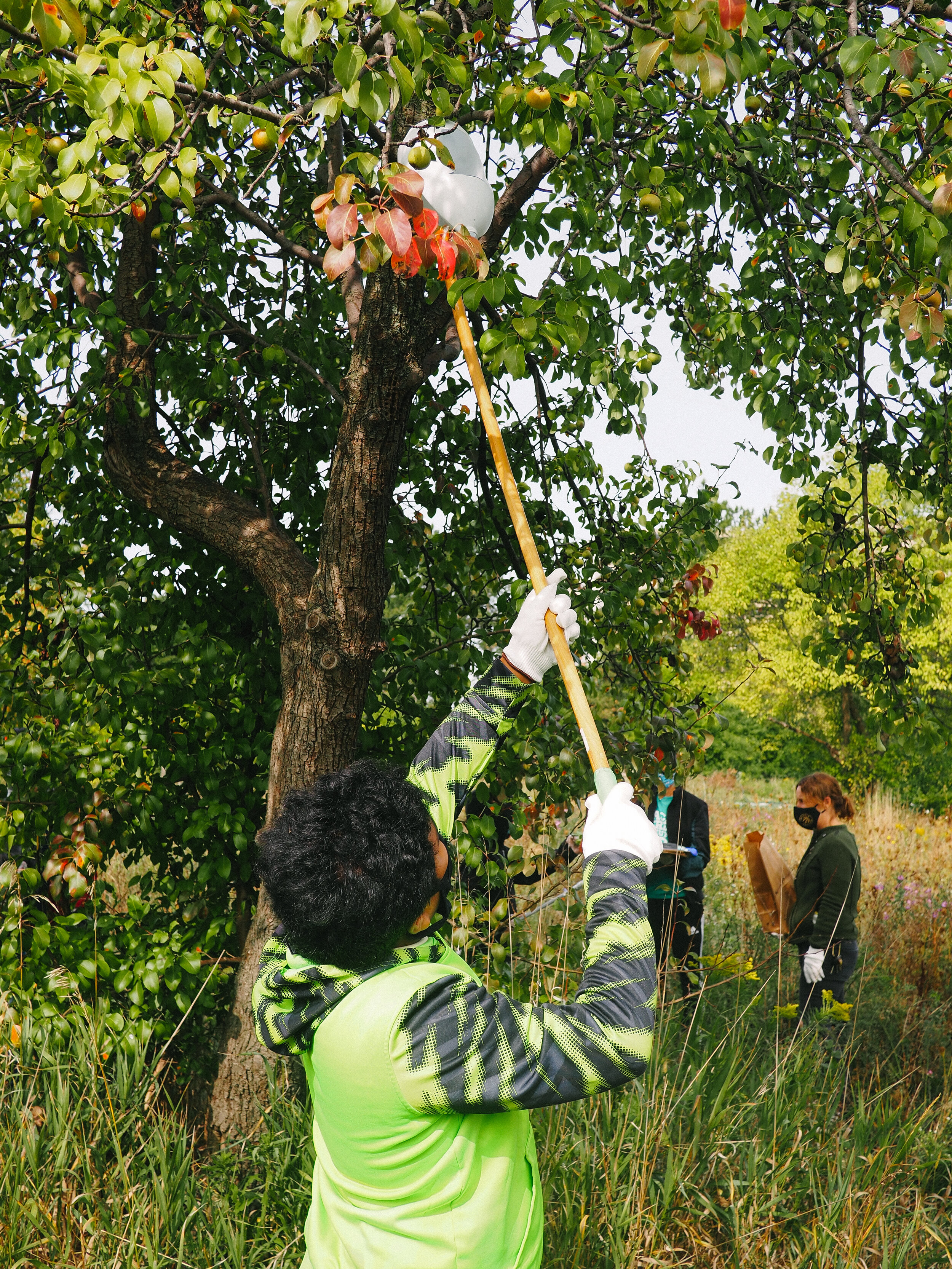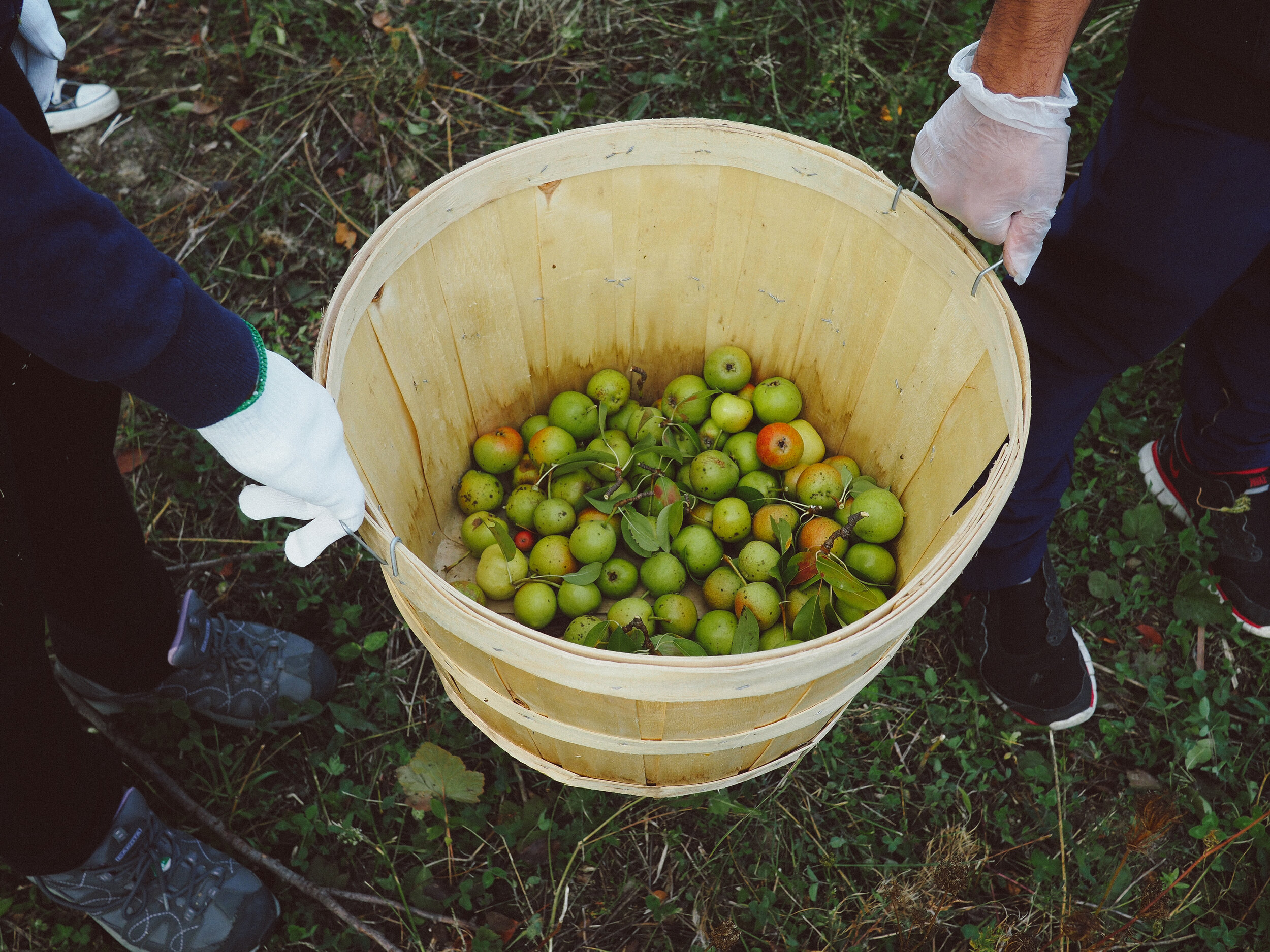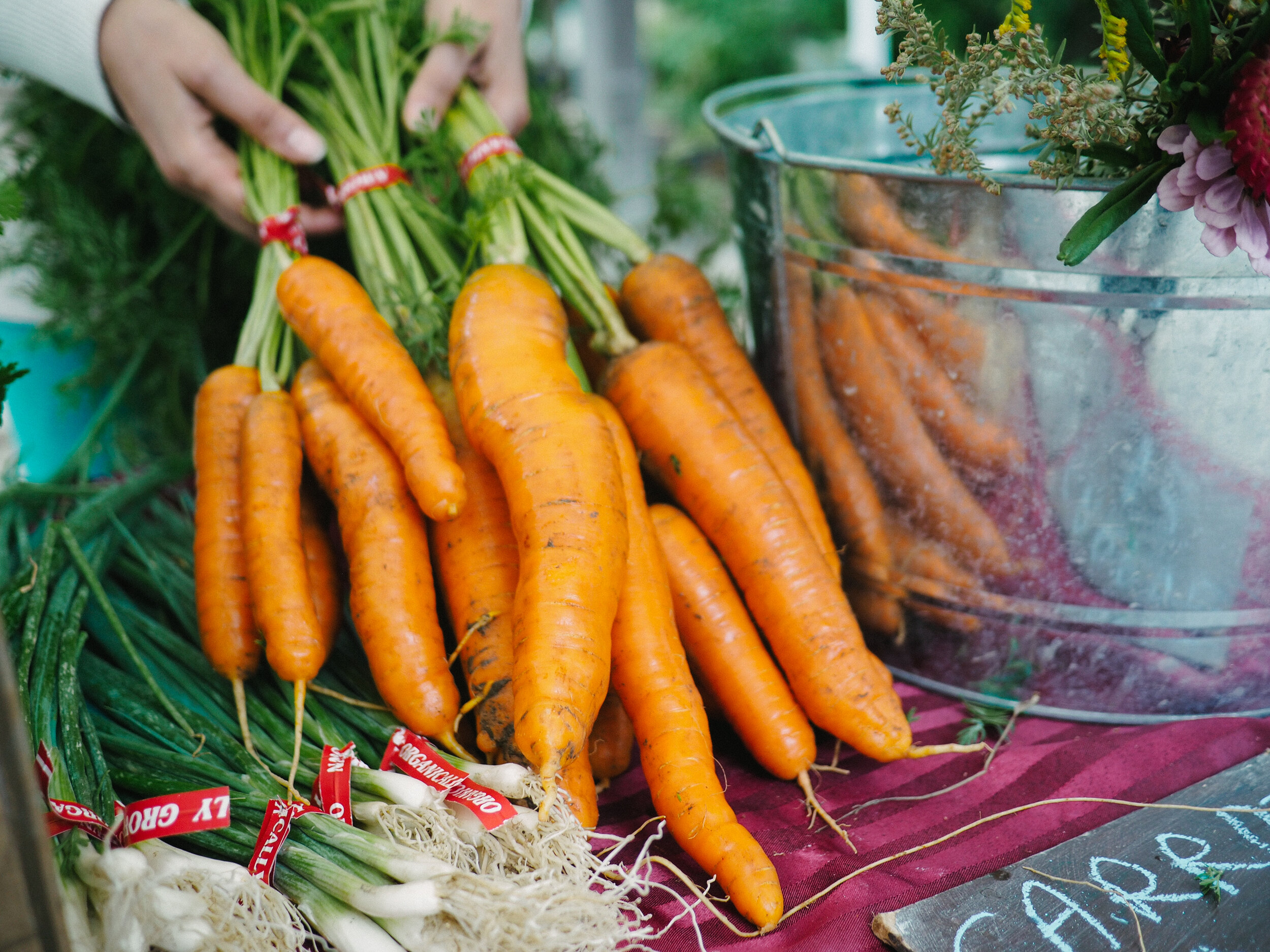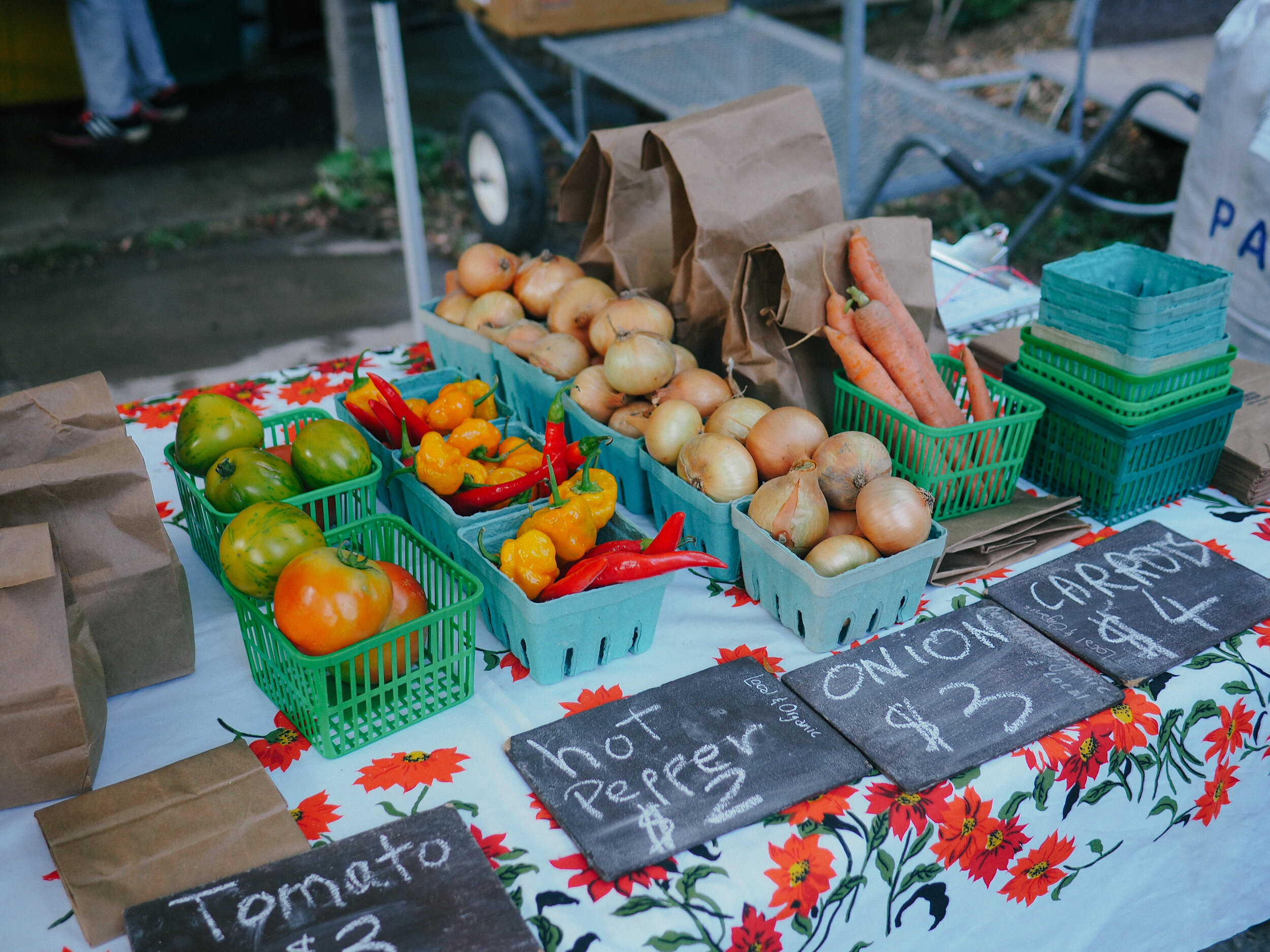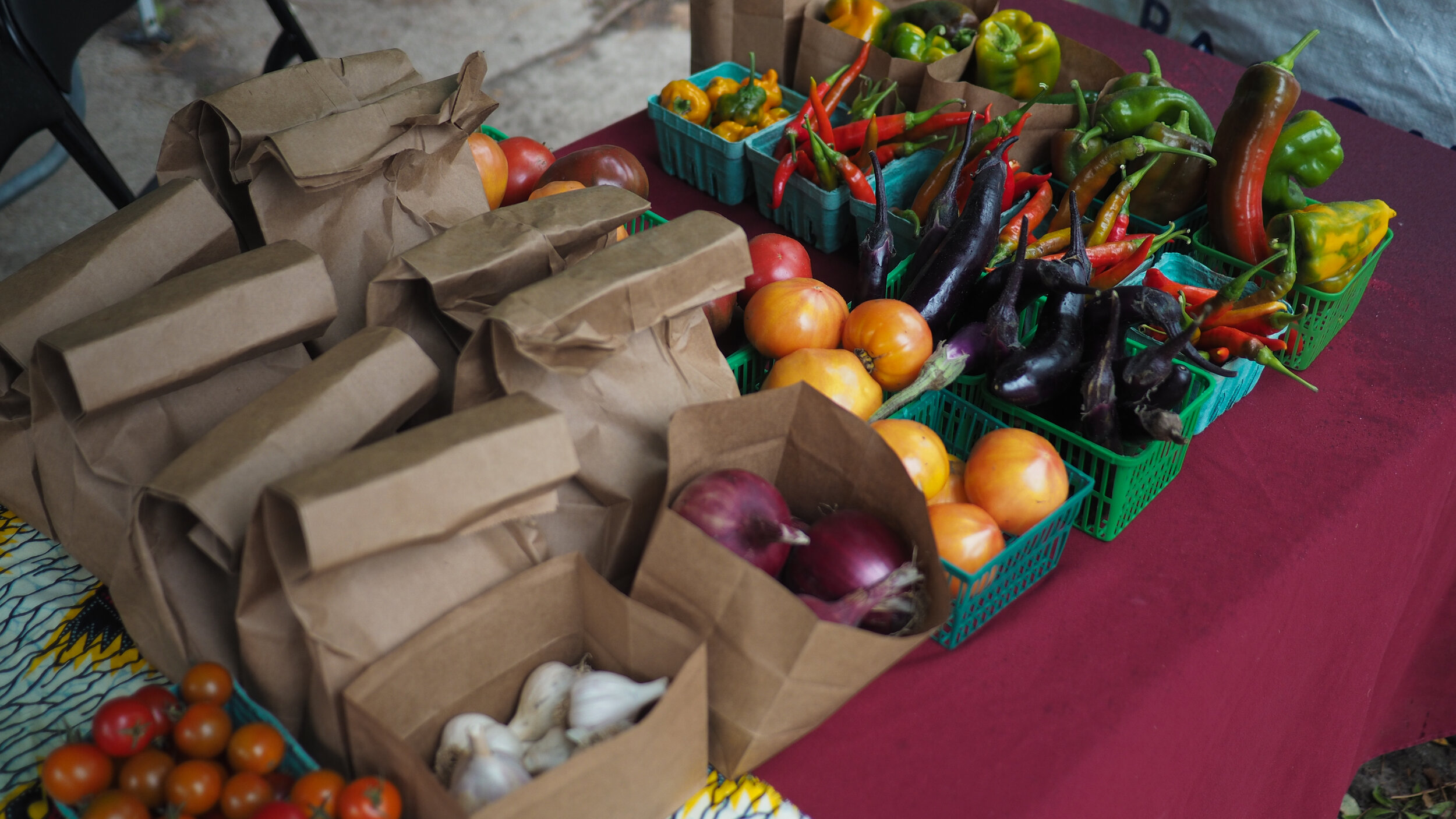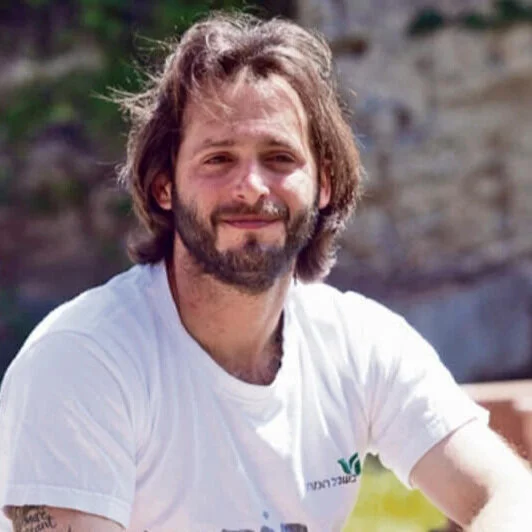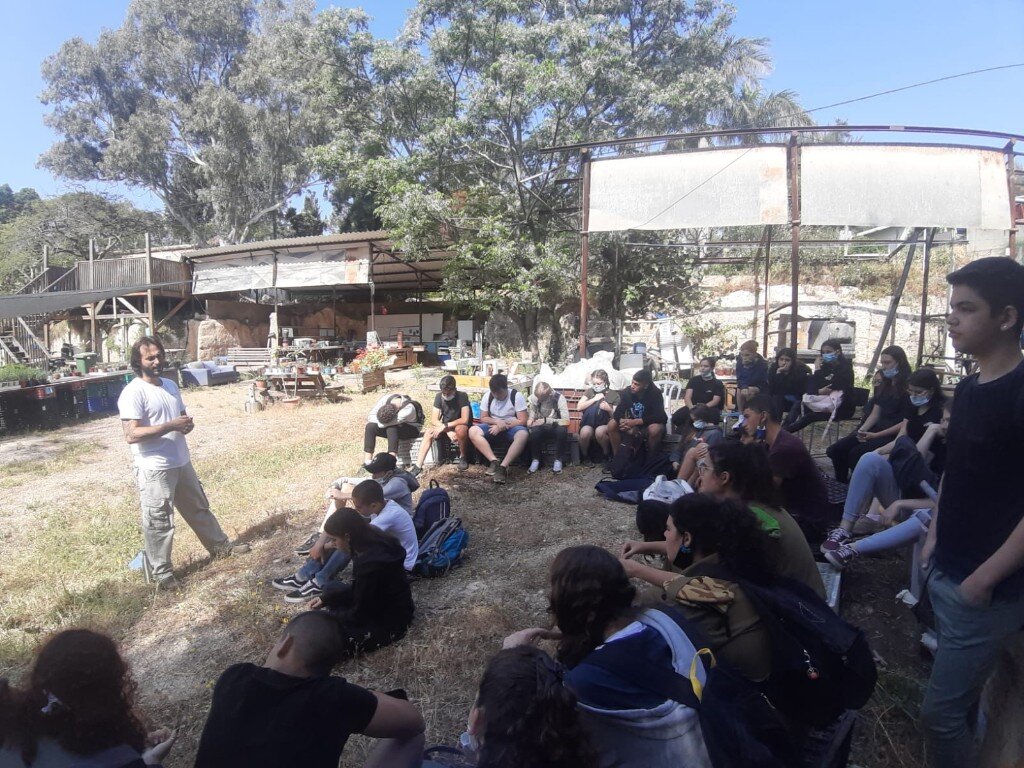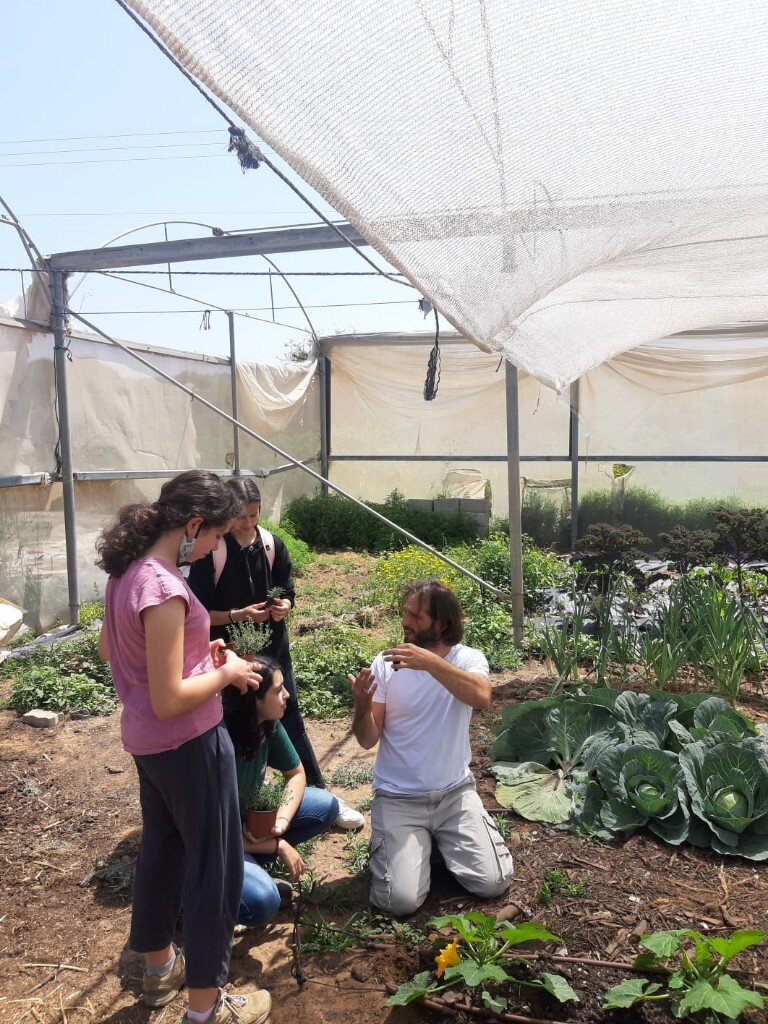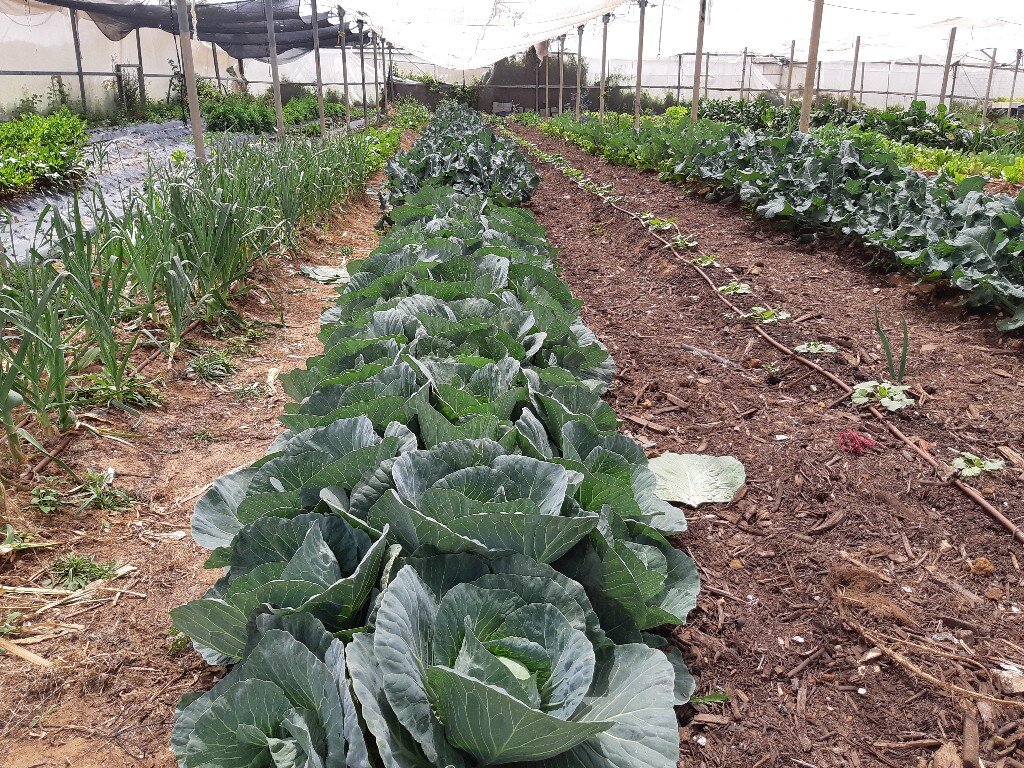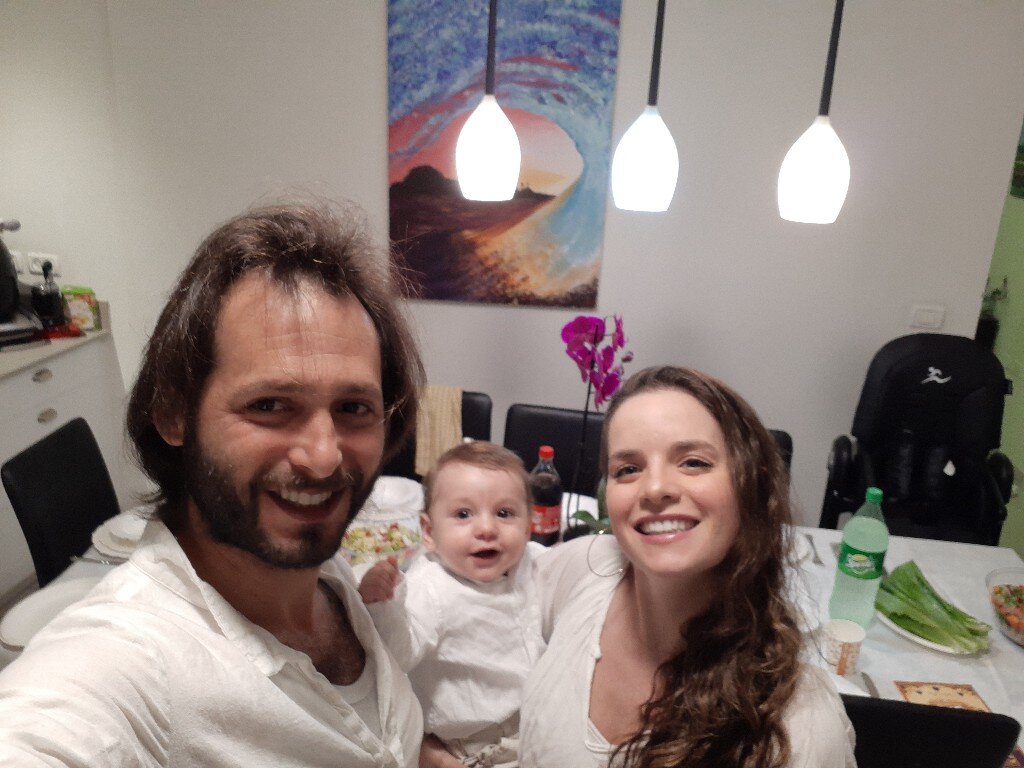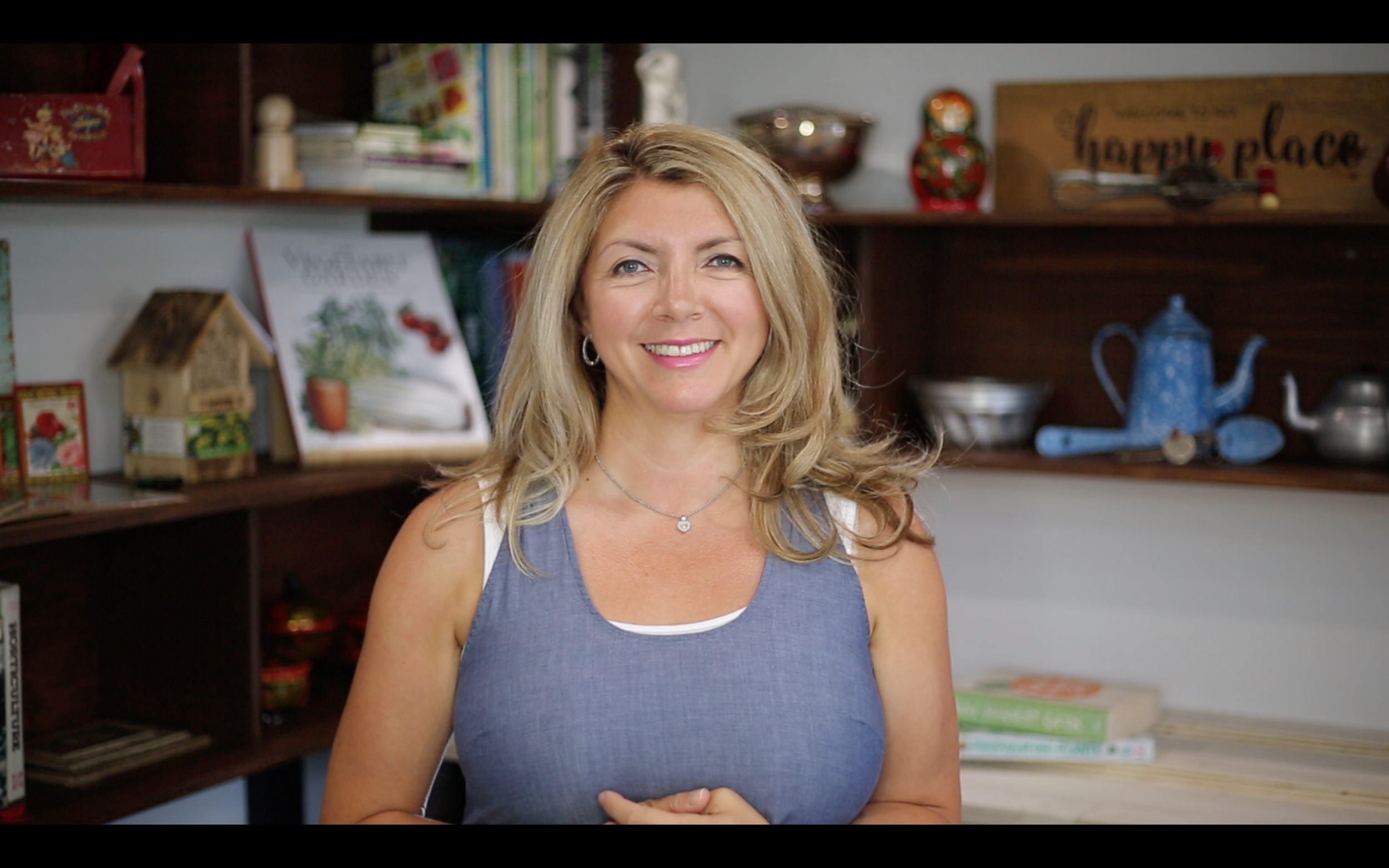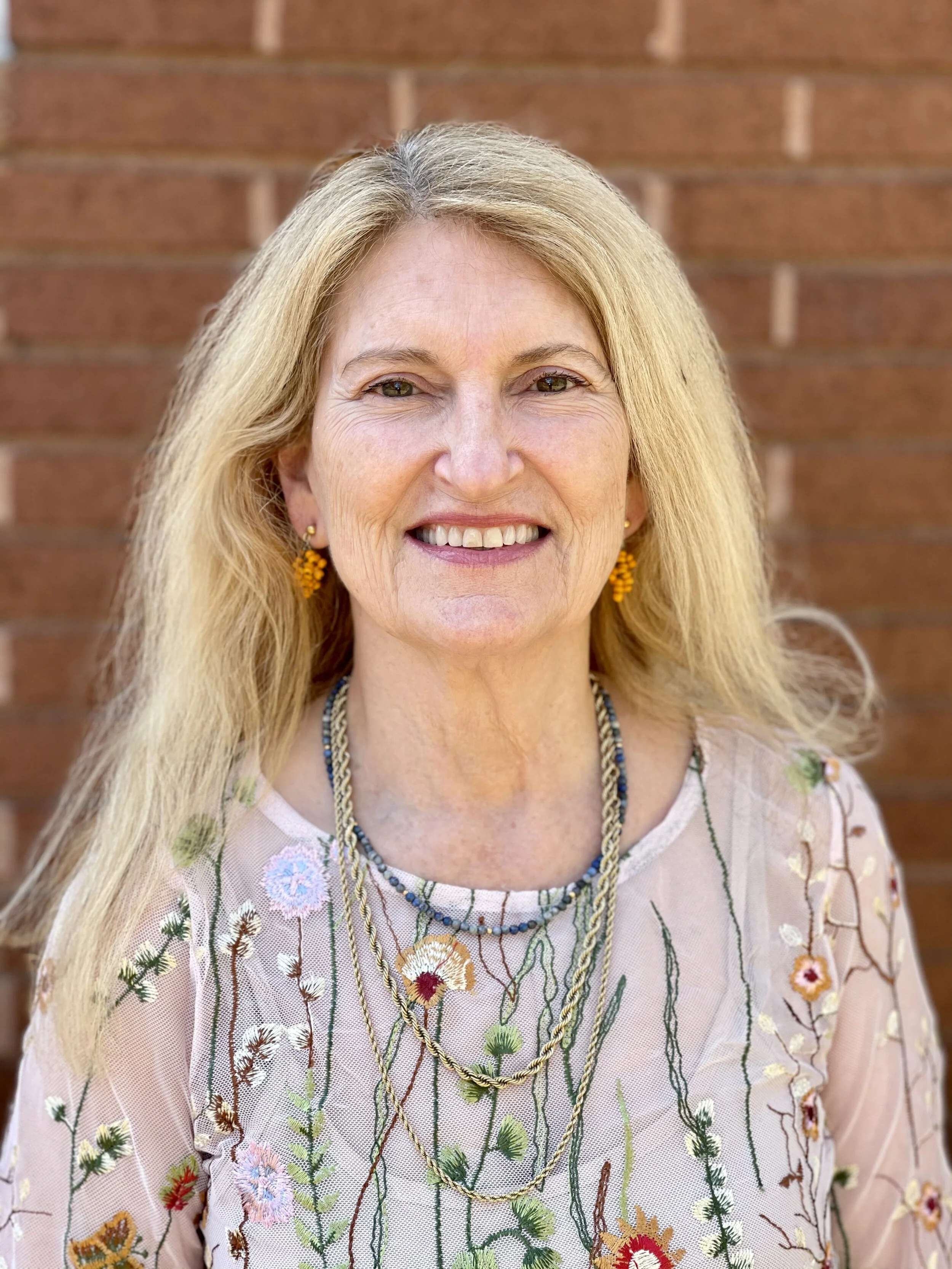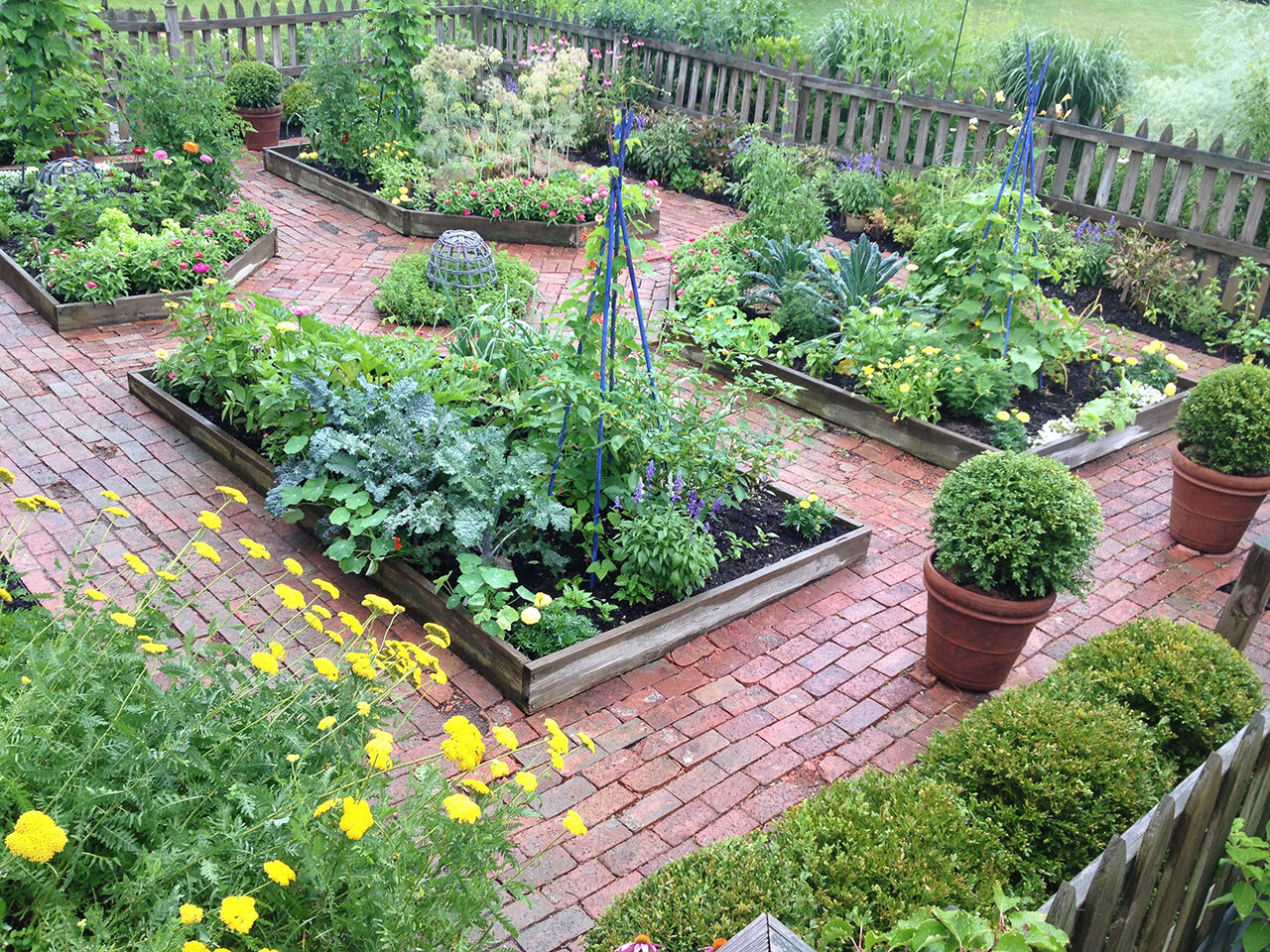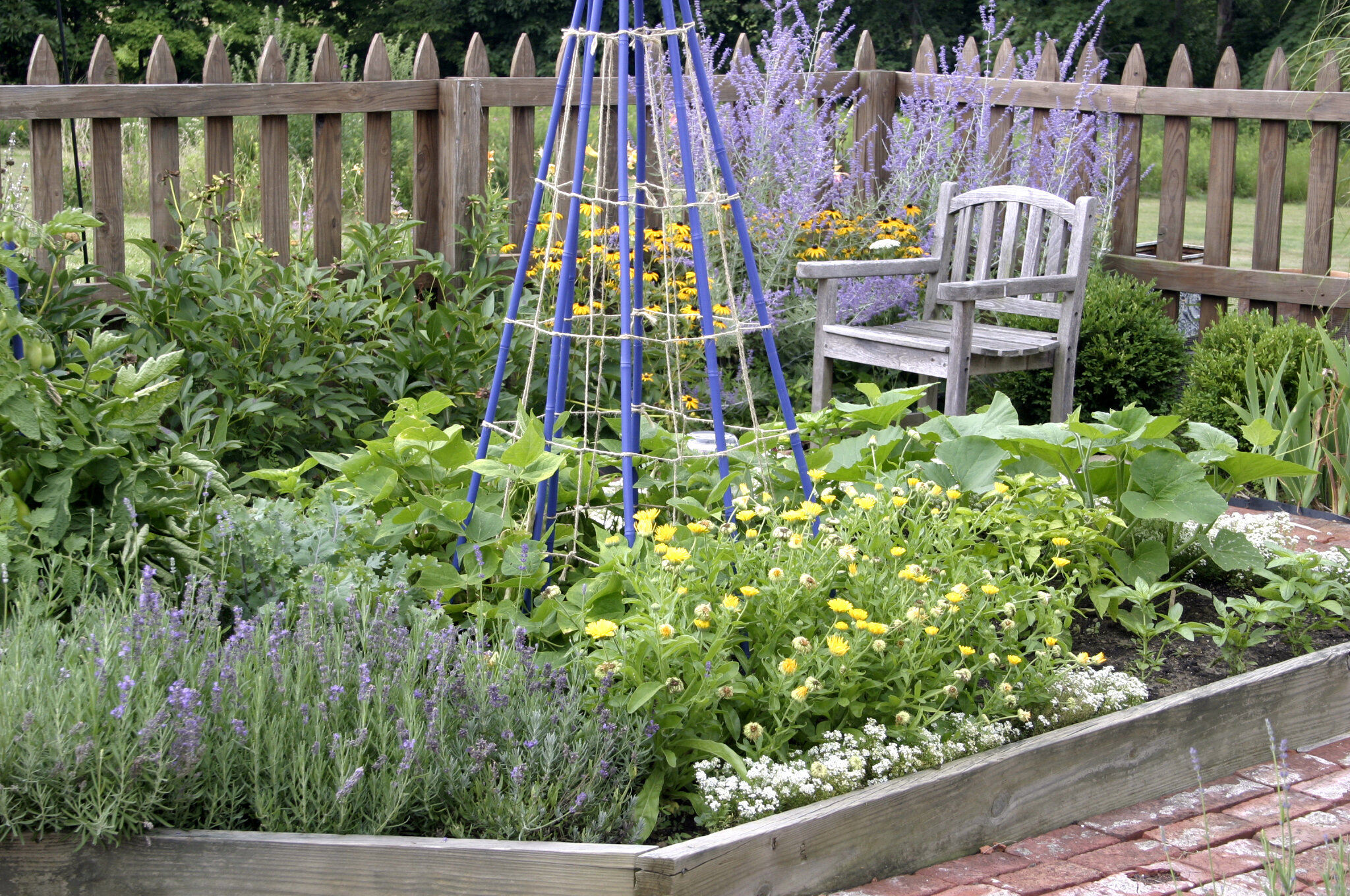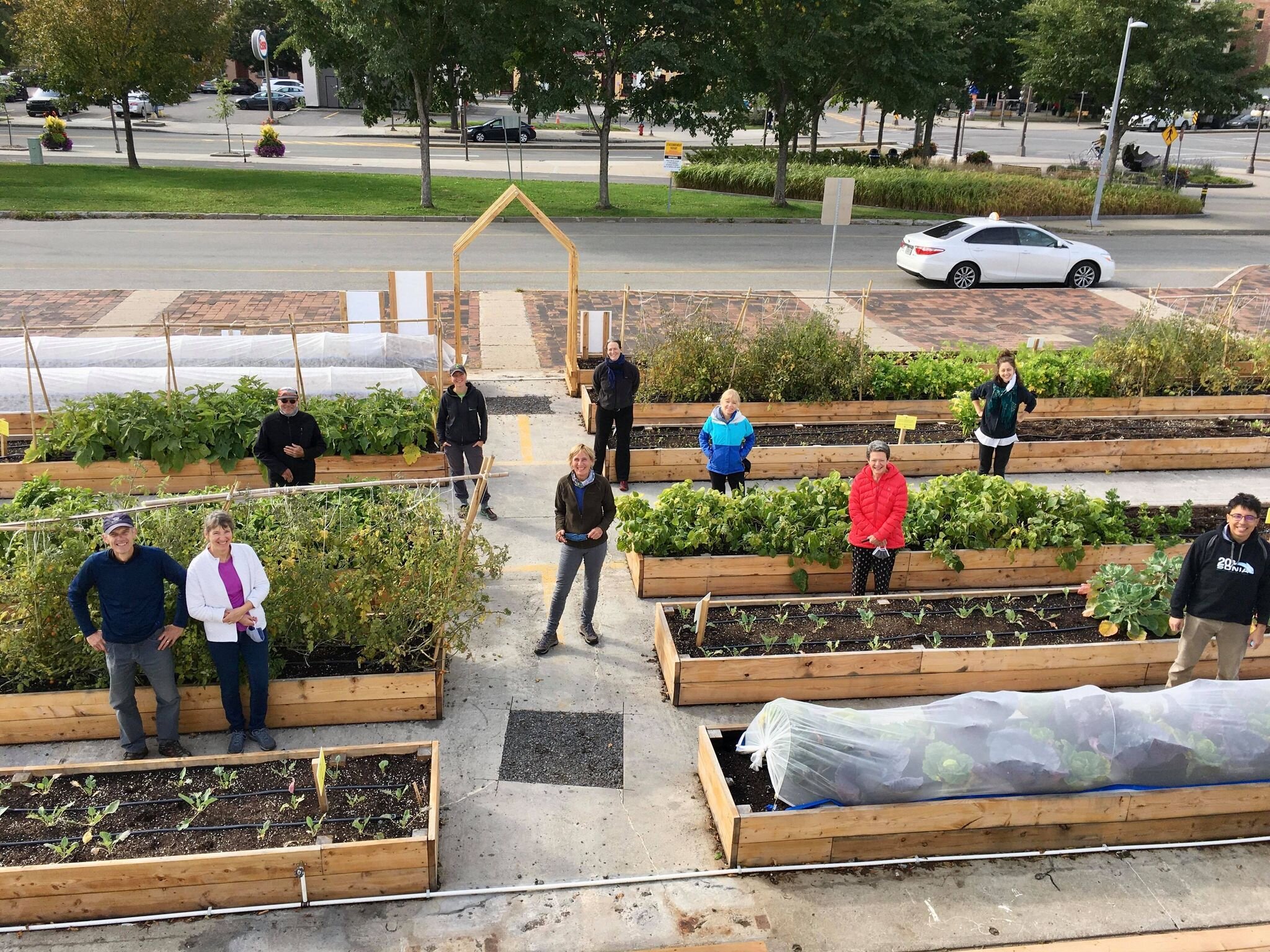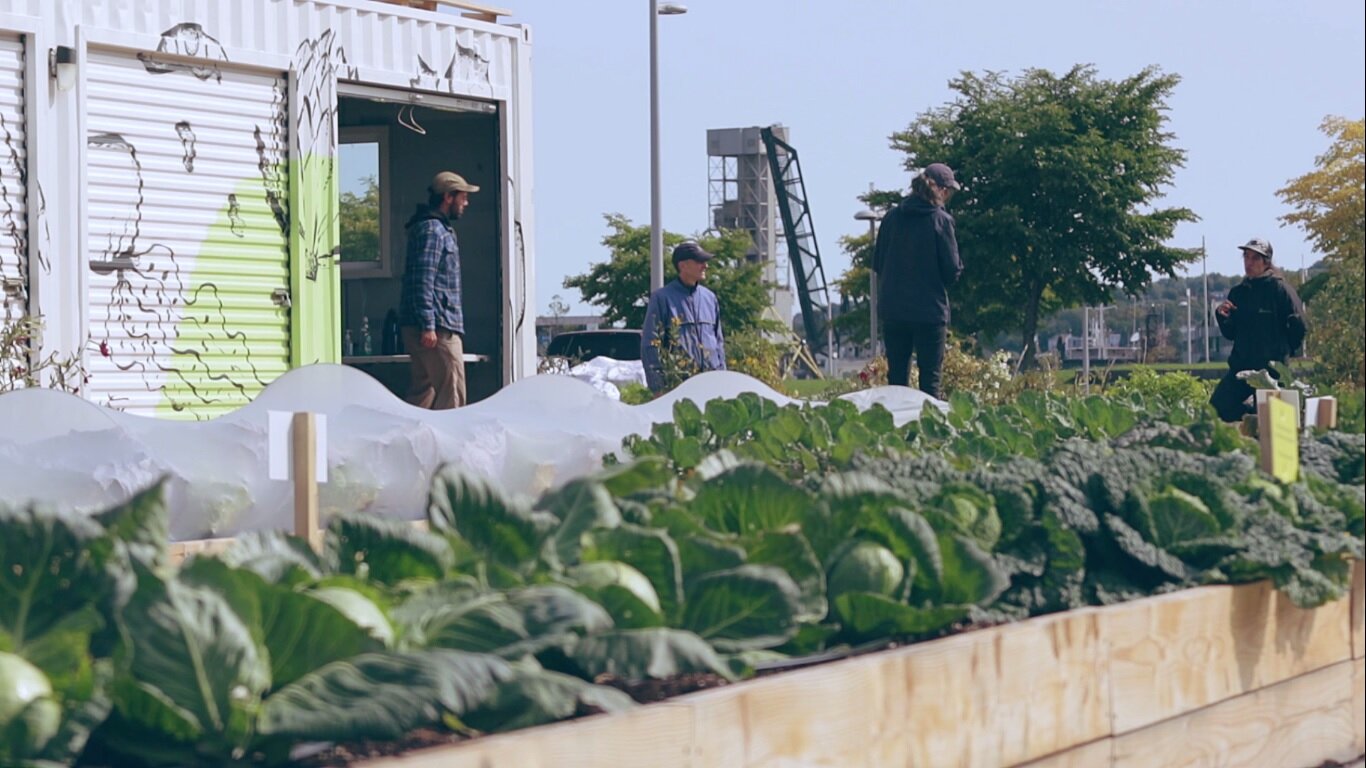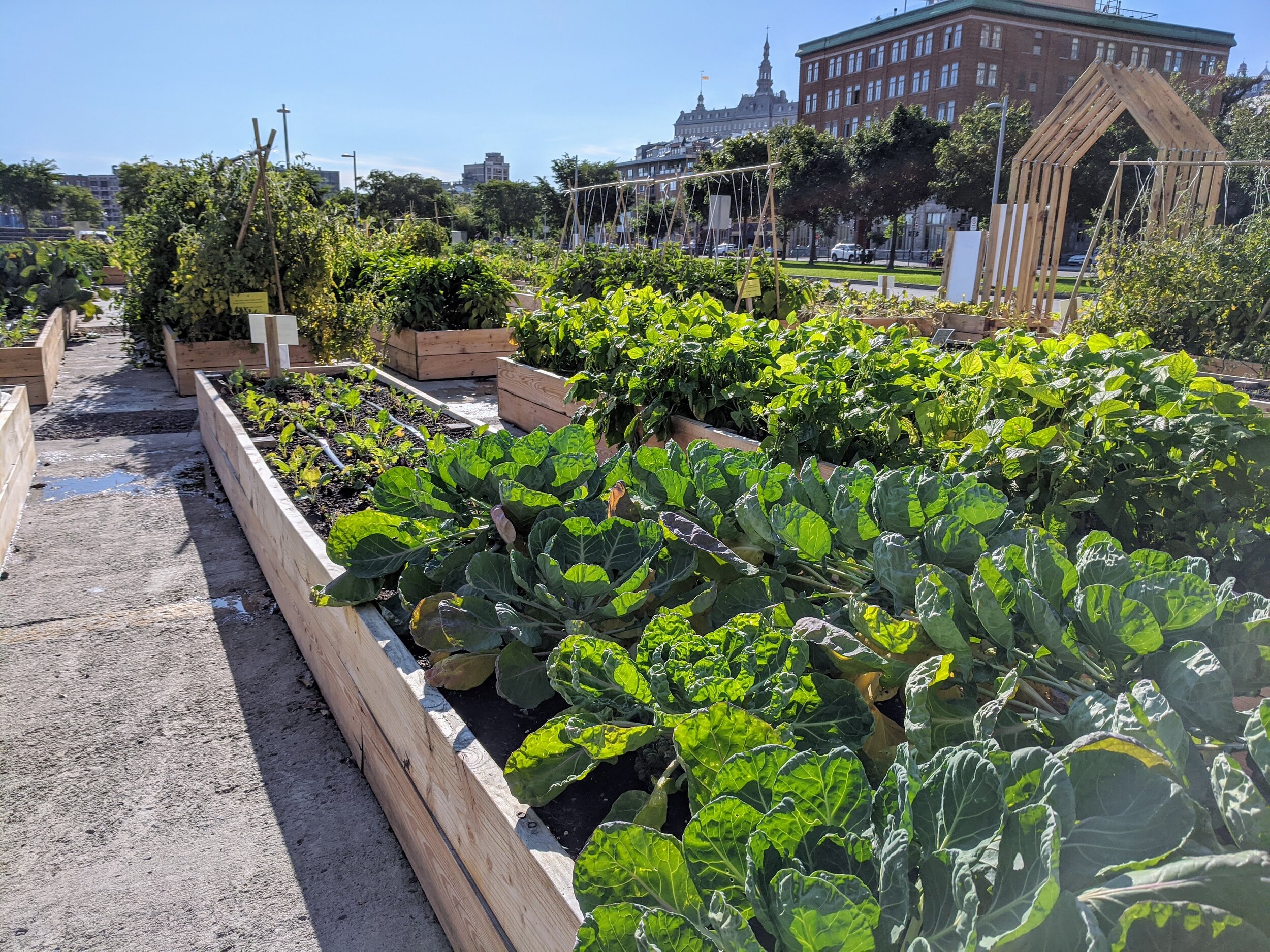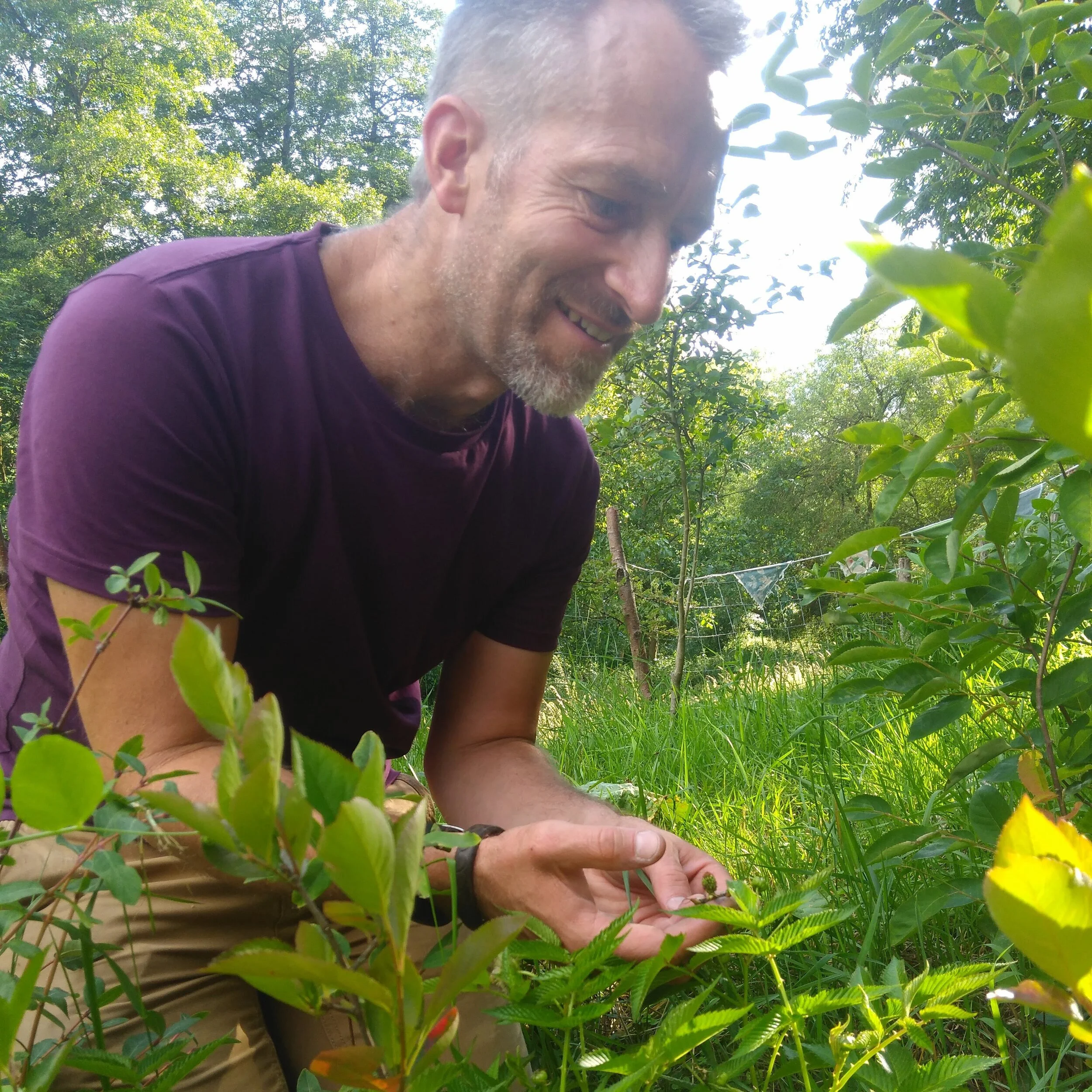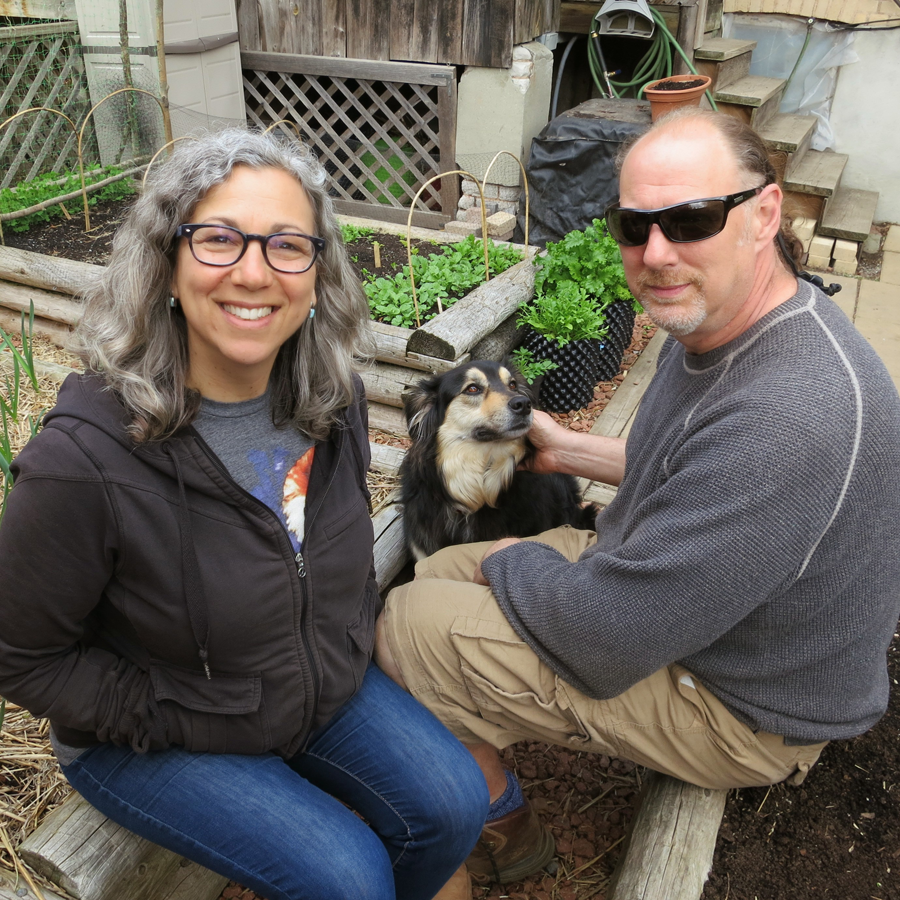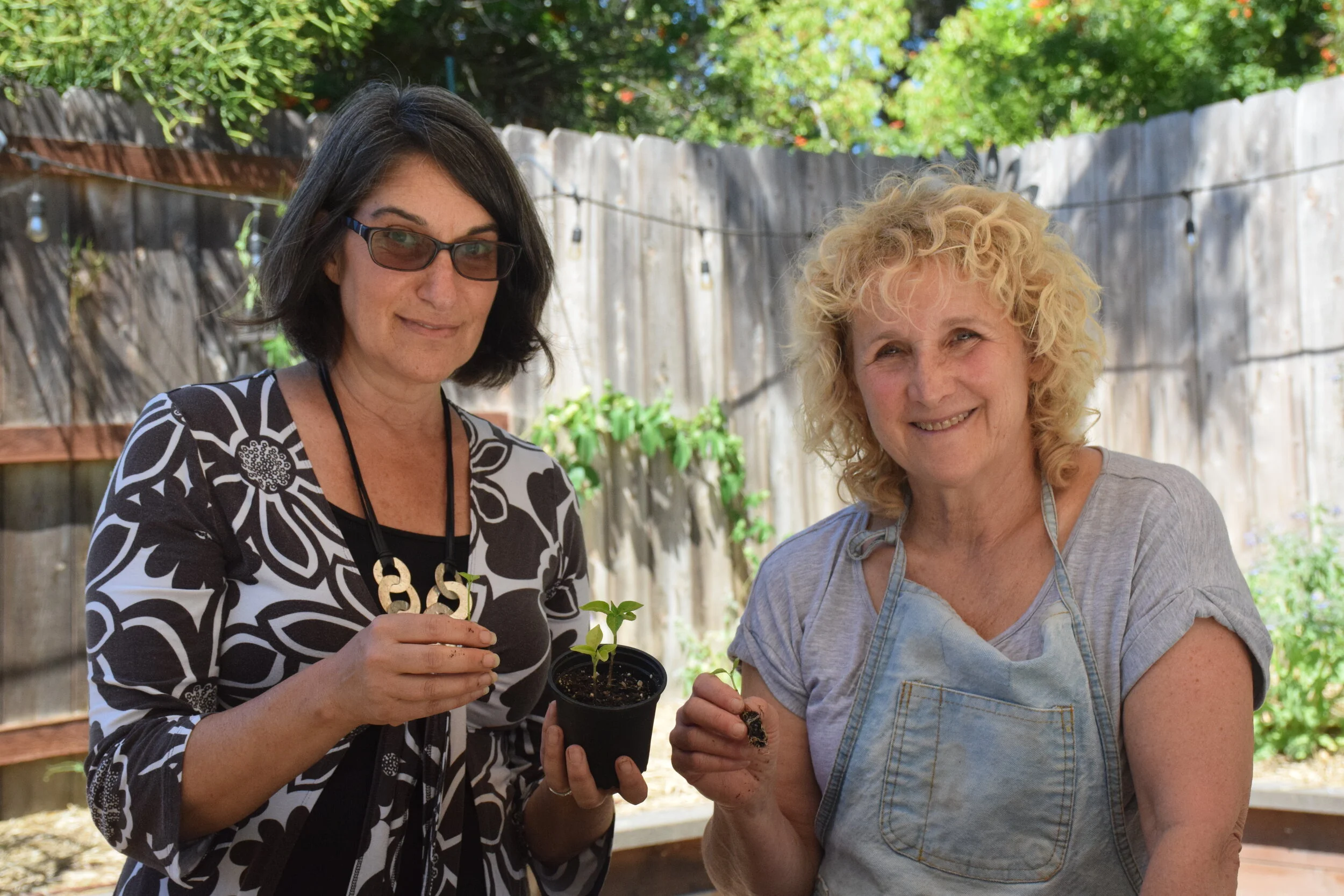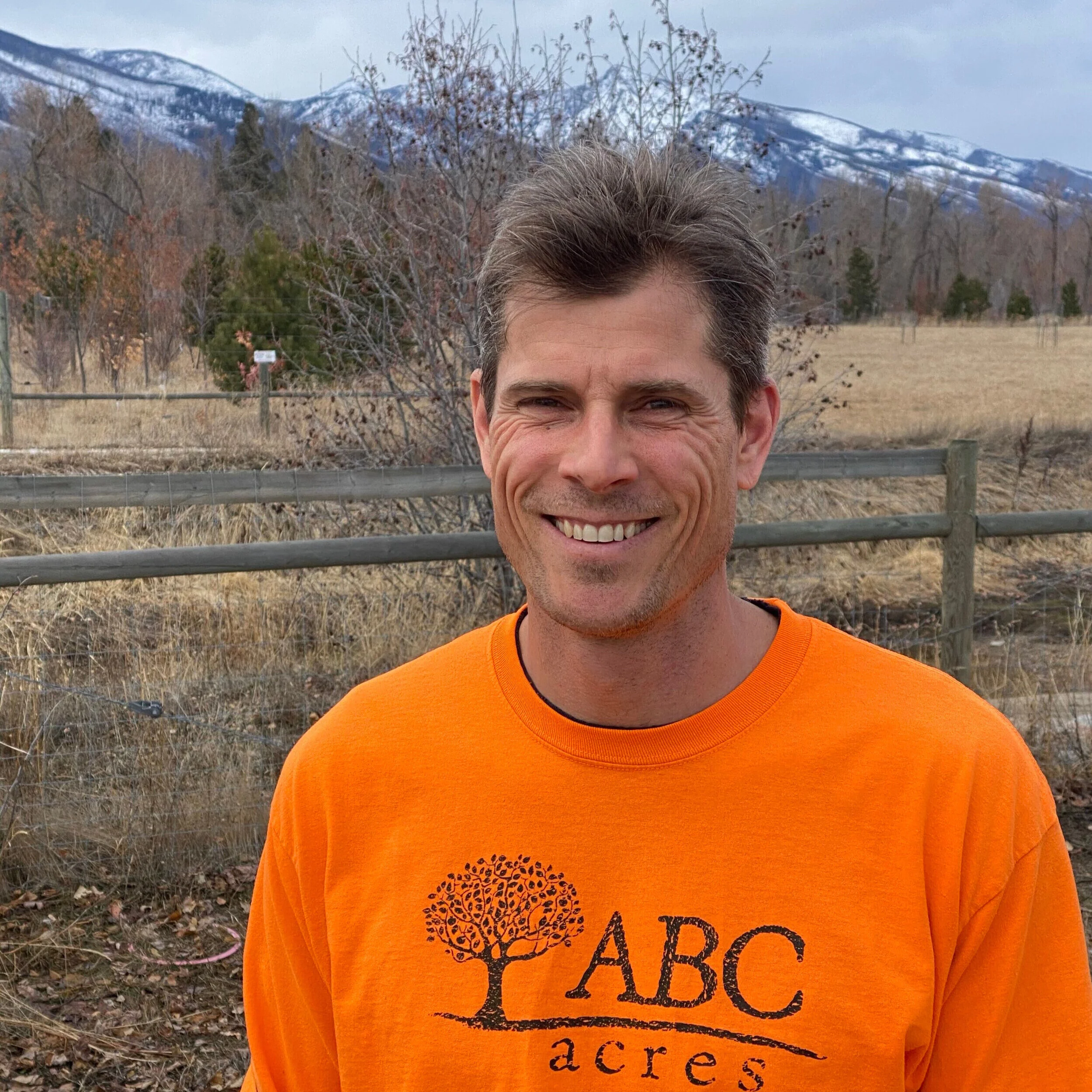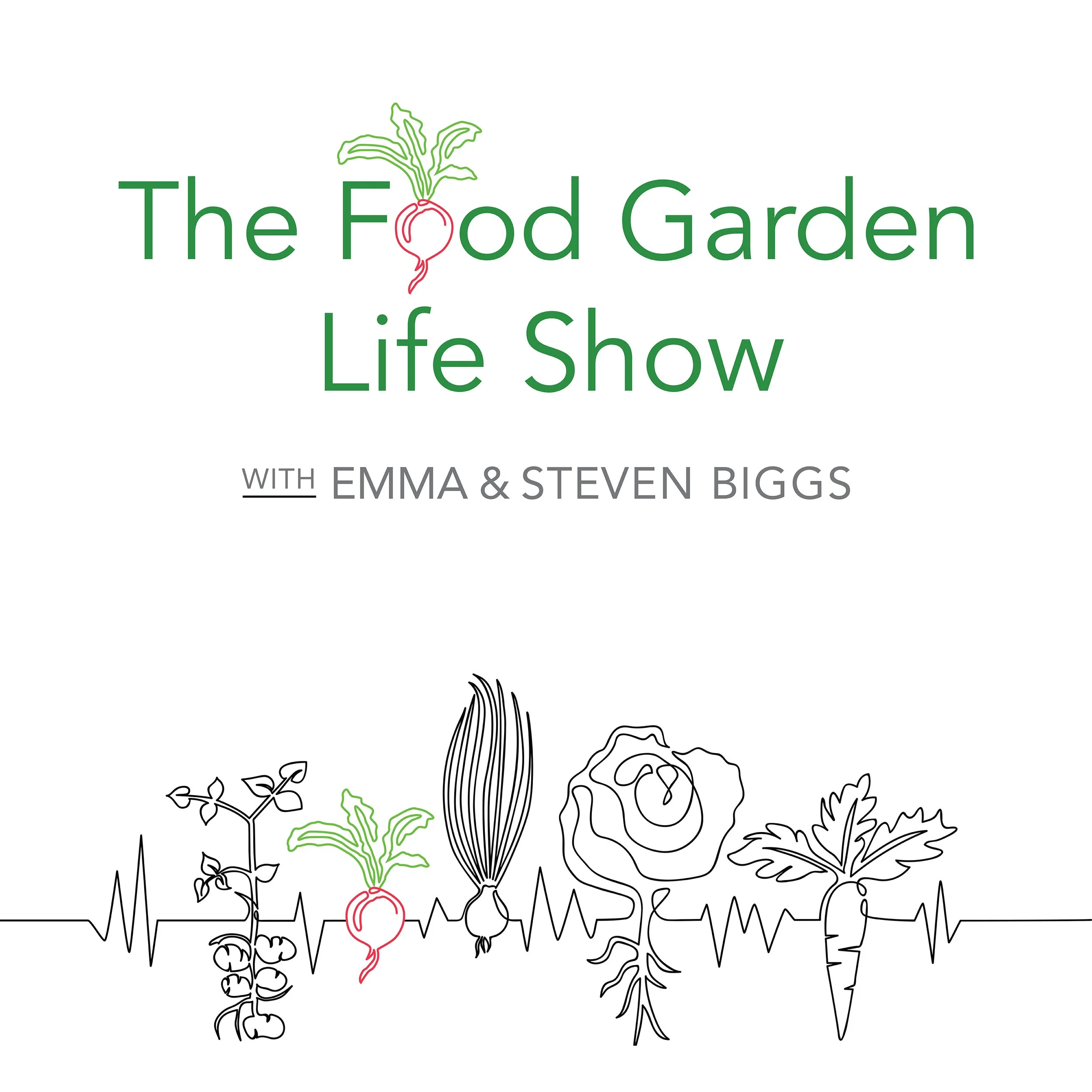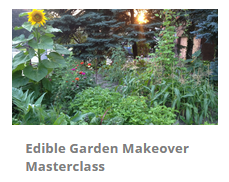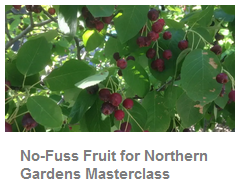Sochan, Galinsoga, Squash Tips: Root-to-Flower Cuisine
Chef Alan Bergo talks about root-to-flower cooking and foraged ingredients.
Chef Alan Bergo talks about root-to-flower cuisine, foraging, and some unexpected flavours.
Our guest today, Chef Alan Bergo, looks at vegetables through the eyes of a forager. He’s passionate about using parts of the plant that are often overlooked.
Chefs using a whole animals might use the term nose-to-tail cooking. Bergo takes this approach with his vegetables, using a root-to-flower approach.
Bergo is the author of the new book, The Forager Chef’s Book of Flora: Recipes and Techniques for Edible Plants from Garden, Field, and Forest.
Often-Forgotten Plant Parts
Bergo talks about using squash tips in the kitchen. “The squash is a perfect example of how foraging and looking for different ingredients changed how I consider vegetables that I thought I knew,” he says.
His advice for cooking squash shoot tips? Cook gently and delicately. Steam them, or blanch for one minute…or barely wilt them in a pan.
Other often-forgotten plant parts include:
Fennel fronds. Bergo likes to combine these with parmesan cheese and bread crumbs to make into cakes.
Carrot leaves. He suggests simmering them in salted water. They keep their shape and texture when gently cooked, and can then be used like salad.
Unripe sunflower heads. They have the texture of an artichoke along with a strong sunflower flavour.
Foraged Ingredients
Sochan. Bergo explains that leaves from this rudbeckia family member can be harvest three to four times over a year. The leaves formed after the flower stalk dies back are different—and are his favourite. Older leaves have a stronger flavour.
Nettles. He finds that common nettle has more of a “saline” or “oceanic” taste than Canada nettle.
Milkweed flowers can be used to make drinks with an intensely fruity flavour.
Meadowsweet flowers have an almond-like taste. Bergo says that a good way to catch floral aromas is by using cream.
Black walnut. Young nuts can be used to make a jam and ketchup.
Pine pollen. It’s used in China and the Middle East to make sweets.
Thoughts on Flavour
Bergo talks about flavours that are shared amongst plants in the same families, recounting the time he served dolmas made using galinsoga leaves, only to have people ask him if they contained artichoke.
Another example of a shared flavour is the hint of almond that shines through in plum-kernal oil or Saskatoon berries.
Bergo’s Top Tips
Steaming greens keeps more flavour than blanching.
Try something new!
Garden in Your 90s
Physiotherapist Nancy Durrant talks about the garden and gardeners at a Toronto long-term care home.
Physiotherapist Nancy Durrant talks about the food garden—and the avid gardeners—at the long-term care home where she works.
“I can’t hold them back sometimes,” says physiotherapist Nancy Durrant as she tells us about the garden at the long-term care home where she works.
The residents she’s talking about are mainly in their 90s. And the vegetables and herbs they grow and harvest become part of the menu at this Toronto long-term care home.
An avid gardener herself, Durrant says the home had nice grounds previously…but she saw the space and imagined a garden. The management agreed with her idea of a garden, and two years ago, Durrant, with the help of staff members who built raised beds, set out with a core group of residents to garden.
She points out that gardens are an excellent fit for what she does as a physiotherapist because gardening is exercise. It’s good for the body, and good for the mind.
Growing Interest
There is a core group of residents who, along with staff, run the garden. Durrant says other residents take part, especially with harvest.
Along with vegetables, they grow a number of herbs. “We have a few herbs which I think is really good because it hits more senses,” says Durrant, talking about the sense of smell.
There are a number of ways they grow interest in the garden:
Grow plants from seed. They grow all all of their plants themselves, from seed. Some are started indoors; some are sown directly in the garden.
Weigh the harvest. Last year they harvest 178 pounds of food. Durrant points out that while this might not sound like a lot, they grow a lot of herbs, which weigh very little.
Grow unusual plants with a story. They focus on heirloom varieties, and put up posters with the story behind the heirloom varieties.
Document progress. Time-lapse photo displays document the progress of the garden.
Save seeds. Residents save seeds from heirloom varieties for the following year, and to share with the community.
Eat what you grow. Produce from the garden is used in meals at the home, with home-grown ingredients highlighted to residents.
Giving back to the community. Donating harvest to a food bank is a way residents can contribute to the community.
Age-Appropriate Garden Tips
Durant says that the gardens are a combination of in-ground plots, raised beds, and containers. The desk-height raised beds make it possible for gardeners with differing physical abilities to take part.
Break up the work into small windows, 1 hour maximum.
For gardeners with arthritic hands, modify tools by adding large grips.
Select long-handled tools to minimize the need to bend.
Select shovels with a small blade to reduce the weight lifted.
Find a Way
Durrant says that there are ways to help those with disabilities continue to garden.
She gives the example of a resident who recently had a heart attack, but who can still cut herbs in the raised beds, and can drops bean seeds into a pre-dug trench.
Black Creek Community Farm
Black Creek Community Farm in Toronto
Mildred Agsaoay and Adjowa Karikari from Black Creek Community Farm talk about the farm, its programs, and the community.
Today on the podcast we visit the Black Creek Community Farm in Toronto.
The farm is located along the northern boundary of the City of Toronto, in a densely populated neighbourhood where Toronto meets one of its northern suburbs, within walking distance of the Jane and Finch neighbourhood.
If you’re from Toronto, you’ll know Jane and Finch — at least by name — from the media attention it gets.
The good things going on in the area — and that there is a vibrant community here — don’t get a lot of media attention, so it might be a surprise for some people to connect Jane and Finch with urban farming, with growing food, and with growing community through food.
“When you do something from the heart, when you’re passionate about what you do, I think you can do big things.” Mildred Agsaoay
Unique Property
Founded in 2012, the Black Creek Community Farm is on an eight-acre property that includes three acres of farmland, a heritage farmhouse and barn, and forest that extends into the Black Creek ravine.
The property has a market garden, a food forest, greenhouses, an outdoor classroom, an outdoor brick pizza oven, a medicine-wheel garden, a mushroom garden, a chicken coop, and beehives.
At the Farm
There are a number of programs at the Black Creek Community Farm.
The Urban Harvest program, a partnership with the City of Toronto, facilitates sharing of surplus harvest by community members with food banks.
There are workshops about growing, cooking, and food preservation.
Programs for seniors help prevent social isolation. Participants tend the gardens, cook together, and even have exercise programs together.
Programs for school-age children build awareness of plants and growing—but also social justice and food justice. Adjowa Karikari, who facilitates student programming, also includes other topics that might grab the attention of students, including worms and worm composting, edible weeds, bugs, and weird plants and animals.
Sunshine Community Garden
Beyond the farm site, the Black Creek Community Farm has been involved in the creation of the Sunshine Community Garden on the property of a nearby high-rise apartment building. Agsaoay explains that the garden is more than just growing food: It’s a way to build community.
“Growing food is a great connecctor for people. It builds relationships and trust.” Mildred Agsaoay
Grow Fruit in a Small Garden
Christy Wilhelmi talks about how to grow fruit in small spaces
Christy Wilhelmi is a self-described garden nerd with a passion for growing fruit and vegetables, and is an expert at small-space edible garden design.
In a broadcast that originally aired live on The Food Garden Life Radio Show, we head to California to talk with Christy Wilhelmi, a self-described garden nerd with a passion for growing fruit and vegetables, and an expert at small-space edible-garden design.
In the podcast she shares tips about:
Incorporating fruit plants in small-space gardens
Growing fruit in containers
Pruning
Tips to succeed for gardeners who are new to growing fruit
Her obsession with gardening began in 1996 on the balcony of her Los Angeles apartment. That led her to a weekly gardening TV show, serving on the board for a community garden, and writing gardening books.
Wilhelmi is the author of the new book, Grow Your Own Mini Fruit Garden. Her previous books are Gardening for Geeks, and 400+ Tips for Organic Gardening Success.
Grow a Fruit Garden
Wilhelmi’s new book is Grow Your Own Mini Fruit Garden: Planting and Tending Small Fruit Trees and Berries in Gardens and Containers.
In the book she focuses on how to grow more food in less space, and how to turn a garden of any size into a “fruit factory.”
City Farm School
Jackie Martin talks about City Farm School in Montreal.
Jackie Martin from City Farm School in Montreal talks about the urban-agriculture apprenticeship program.
Today on the podcast we head to Montreal to hear about City Farm School, an urban-agriculture apprenticeship program.
Jackie Martin, a co-ordinator with City Farm School, explains that this not-for-profit program uses space provided by Concordia University. In addition to greenhouse space on the 13th floor of a downtown building, the “farm” is located at the Loyola Campus, in a residential neighbourhood. She says that the market garden is roughly the size of a soccer field — and there’s a medicinal-plant garden too.
Apprenticeship Program
The program, which is open to anyone in the community, has two streams: a market-gardener apprenticeship and a medicinal-plants apprenticeship.
The program begins in the greenhouse in March, sowing seeds for transplants for the farm and for a plant sale. In May, students begin transplanting and seeding at the market garden.
The community market opens in June. Students take part in harvesting for market, preparing produce for market, and staffing the market. Later in summer students save seeds for the following year.
Before graduating students are expected to teach a free workshop that is open to the public. Martin says that past topics have included seeding, fermentation, and pest control — with some of the more memorable topics being herbal medicine for pets and edible weeds.
Community Outreach
The weekly market has been an important way to connect with the community. “Our neighbours are our biggest supporters, and always have been,” says Martin. She explains that many of their neighbours now grow their own kale, after she sent them home from market with their own kale seed. It’s not a move that increases kale sales — but it’s in keeping with their mandate to encourage gardening in the city.
Martin says former students have gone on to become farmers, teachers, and community organizers. Many of the organizations they now partner with were created by former students.
City Farm School Documentary
Watch this 3-part documentary about City Farm School that was made by a former student.
Foodscaping
Jeremy Cooper talks about foodscaping
Jeremy Cooper from Cooper’s Foodscaping talks about his path into foodscaping and shares his top tips.
Today on the podcast we talk about “foodscaping,” gardening that combines the ornamental with the edible, also known as edible landscaping.
Foodscaper Jeremy Cooper says he likes to work with plants that have multiple functions, including ornamental, herbal, medicinal, ecological, and edible.
Cooper worked in a number of jobs before focusing on foodscaping. In hindsight, he sees that he was circling this intersection of food, gardening, and the environmental before he even realized it.
Part of what he does as a foodscaper is to educate clients about smarter ways to garden. For example, many times he’ll find people battling plants that are edible. “That’s food!” he tells them, as he helps them see the plants in another light.
Foodscaping Tips
Cooper’s tips for gardeners interested in foodscaping:
Don’t be afraid to dream about other ways to use a space and think about what you might like in the long term. “Don’t be afraid to dream…it doesn’t have to be a lawn,” he says.
Grow foods you like to eat.
Make sure the soil is healthy, and, if in doubt, dig into the topsoil and then down below the topsoil to see what is there. He points out that in many new subdivisions, gardeners are left with hard-packed soil and gravel beneath a shallow layer of topsoil.
Cooper’s Favourite Food Plants
Serviceberry. Cooper says that while many people grow this as an ornamental plant, a lot of people don’t realize the fruit are edible. He points out that it’s an excellent understory tree that does well in partial sun.
Amaranth. Beautiful, colourful. Edible leaves and grain.
Currants.
Bergamot. Flowers and herbal uses.
Yarrow. Flowers and herbal uses.
Squashes.
Gardening and PTSD
Nachum Lamour-Friedman from Borgani talks about gardening and PTSD
Nachum Lamour-Fridman from Borgani talks about PTSD and the role that the outdoors and agriculture can play in healing.
Today on the podcast we explore the idea of healing through growing.
We travel to Israel, to meet Nachum Lamour-Fridman. He uses plants and growing as part of the programming at the Borgani community centre he founded for PTSD sufferers and their families.
Lamour-Fridman’s dream is to create a model of a sustainability centre that can be used to help PTSD sufferers everywhere.
Post-Traumatic Stress Disorder (PTSD)
Lamour-Fridman realized the power of growing when, in the depths of his own PTSD, being outdoors and amongst plants was one of the things that helped him rise up and begin to heal.
He says that he was sometimes unable to sleep or eat, making it difficult to function. Yet living in a kibbutz, where there is a strong culture of work, he says that those who can’t work can be ostracized. “It affected my soul; it affected my ability to engage reality,” he says as he talks about how PTSD affected his ability to live and work in his own community.
He recently spoke to the Knesset, the Israeli parliament, where his key message was for it to act now to help those with PTSD, likening untreated trauma to a terminal cancer or an auto-immune disease.
Borgani
Lamour-Fridman explains that Borgani translates into “pit garden,” a fitting name given that the centre is located in a what was a stone quarry in Roman times.
The old quarry had previously been used by the community as part of a cattle farming operation, but for the past 20 years was used as a garbage dump.
Lamour-Fridman began to clean it out.
At first, he wasn’t able to stay in the enclosed space for long, and might only stay 5 minutes. Now it’s become a place of comfort and healing for him. “Today when I go there it’s like a stone womb,” he explains.
The Borgani sustainability centre brings together agriculture, technology, and education. It includes a greenhouse and farm, selling food baskets to the community. There is also a composting facility, and studios where participants make furniture and art.
“It’s not a charity,” he explains, pointing out that participants take part in the full cycle of growing, tending, and selling. He notes the importance of participants seeing the value in what they do.
Looking ahead, he says, “We have big plans.” These plans include yoga and therapy through movement and music.
“When you start, it doesn’t matter if it’s a half-a-metre garden or 20 acres. When you start, don’t stop. Because nature doesn’t stop and life doesn’t stop.”
Backyard Honeybees and Living Big in a Small Space
Beekeeper Justin Maness from Buddha Bee Apiary talks about the urban hive-hosting program he runs.
Justin Maness of Buddha Bee Apiary talks about bees, the bus life, and his new cookbook, Tiny Home, Big Flava’
In a broadcast that originally aired live on The Food Garden Life Radio Show, we head to North Carolina to chat with beekeeper Justin Maness.
Backyard Honeybees
Maness began working with honey bees after finishing college, when he joined a research team studying the links of neonicotinoid pesticides and honey bee mortality. After that, he worked in for-profit and non-profit ventures with bees, and eventually founded Buddha Bee Apiary.
He says that at Buddha Bee Apiary his goal is to spark curiosity about bees, educate people about bees — and grow a crop of pollinator advocates.
Buddha Bee Apiary places honeybee hives in urban and suburban backyards through its Host-a-Hive program. It also offers a mentorship program for those interested in one-on-one learning.
Living Big in a Small Space
We also hear about the life that Maness and his family live in their converted school bus.
Maness says that their interest in the school-bus lifestyle started after his wife, Juby, bought a small school bus to ferry merchandise for her business to events. After a couple of nights on the road, they realized that they liked the mobility — and eventually bought a larger bus to convert into a home.
Maness says that having a small home means they spend more time outside, whether working in the garden, eating, or hanging out.
He and Juby share their approach to life and food in their new cookbook, Tiny Home, Big Flava’.
In the book, Maness says, “If we could ask for anything at all to come from this cookbook it would for you to have as much fun as we did putting this together. Crank up that music, bust a move, and share you kitchen slam down parties with us…”
It Takes One Person
Julia Dimakos went from never having gardened to a 7,000 square foot garden.
Julia Dimakos is an avid gardener and garden communicator…but she didn’t grow up gardening. One person sparked that interest.
Today on the podcast we meet an avid gardener who grew up in downtown Toronto, in a family that didn’t garden. And for a long time she didn’t garden either.
But then one person sparked her interest in gardening, and dropped by with a bucket of llama poo to help her make and plant her very first garden.
Julia Dimakos hasn’t looked back. Her kitchen garden has grown to 7,000 square feet.
Now, she is on a mission to spark the interest in gardening in other people. She gives presentations about gardening, and shares her passion for gardening online.
Garden Wisdom
“I want people to see gardening as something fun,” says Dimakos as she shares her tips for new gardeners.
Her top tip is that new gardeners start small, and not take on too much the first year. Make it manageable, and grow the garden over time.
And if something doesn’t work? “Every failure is an opportunity to learn to do better next time,” she says.
Teachings to Guide Gardeners
Isaac Crosby talks about how he uses the 7 grandfather teachings to guide his gardening.
Isaac Crosby, Urban Agriculture Lead at Evergreen Brickworks
Today on the podcast we hang out here in Toronto to speak with Isaac Crosby. Isaac is the Urban Agriculture Lead at Toronto’s Evergreen Brickworks.
During our chat, Isaac told us that, “Part of wisdom is not keeping it to yourself.”
He shares with us wisdom that has come to him through Ojibwa teachings. Isaac is from the Ojibwa of Anderdon, a small farming community In south-western Ontario. He takes the seven grandfather teachings and explains how we can interpret them when gardening.
His advice for new gardeners? “Don’t be afraid to make mistakes, because that’s where you learn.”
The 7 Grandfather Teachings
The 7 Grandfather teachings are about:
Humility
Honesty
Respect
Bravery/Courage
Love
Truth
Wisdom
Make a Potager Garden
Landscape architect Jennifer Bartley talks about how to make a potager
Landscape architect and author Jennifer Bartley talks about how to make a potager garden.
Today on the podcast we head to Ohio to find out more about potager gardens. Jennifer Bartley tells us about this traditional kitchen garden style from France, and how to create the same sort of food-producing garden with seasonality and a sense of intimacy at home.
Bartley writes, “The potager is more than a kitchen garden; it is a philosophy of living that is dependent on the seasons and the immediacy of the garden.”
Bartley is a landscape architect, whose firm, American Potager, designs gardens inspired by the grand French kitchens.
She is also the author of The Kitchen Gardener’s Handbook and Designing the New Kitchen Garden: An American Potager Handbook.
About Potagers
“Jardin potager” is French for kitchen garden. The traditional potager garden is a seasonal kitchen garden with vegetables, fruit, herbs, and flowers for cutting. Meals change as crops in the garden change with the seasons.
Bartley explains that there is a long tradition of this style of gardening in France. Potager gardens combine beauty and accessibility, and are often enclosed within walls in view of the residence.
The garden can be a place of restoration and refuge, says Bartley. It can be a destination—somewhere close to the kitchen that feels like it’s own spacial place.
She says that where she grew up, in Ohio, the tradition is to make gardens with rows, not unlike the surrounding agricultural fields. These gardens are often situated in a rarely seen part of a yard. “If you put it in a remote part of your landscape, you don’t go there, you don’t see it, and you don’t maintain it,” says Bartley.
Tips to Make a Potager
Borrow part of an existing wall to help create the sense of enclosure, e.g. part of a building, the back of a garage, or even a hedge
Think of sunlight for sun-loving crops
The potager can be a “tasting garden” with a progression of different crops being ready as the season moves along
Make it in a place you pass by daily
Choose bed dimensions for ease or reaching, e.g. 4 feet wide
Make pathways wide enough for a wheelbarrow, e.g. 3 feet wide
Bartley says that Chateau Villandry in France has gardens that inspire her.
Learning to be a Home Herbalist
Herbalist Bevin Cohen talks about the culinary, medicinal, and cosmetic uses of herbs.
In a broadcast that originally aired live on The Food Garden Life Radio Show, we chat with herbalist Bevin Cohen about using, growing, and foraging herbs. He talks about culinary, medicinal, and cosmetic uses.
He also talks about his journey into the business of herbs and building his herb business.
Cohen is also an author and seed saver. His new book is The Artisan Herbalist: Making Teas, Tinctures, and Oils at Home.
He is also the author of Saving Our Seeds, and From Our Seeds & Their Keepers.
In this episode he talks about:
Tips on how to make herbal teas
The difference between an infusion and a decoction
How a tincture is made
The steps in making an infused oil
The difference between a salve, balm, and a lotion
Common foraged herbs
Easy-to-grow herbs for beginners
Emma’s Tomato-Talk Segment
In Emma’s Tomato segment, she describes some of her favourite varieties that she will be growing in 2021.
Biggs-on-Figs Segment
In the Biggs-on-Figs segment we head to Philadelphia to talk with YouTuber and Millenial fig enthusiast Ross Raddi.
He tells us about the method he is using to speed up his fig harvest by a month.
Civil Disobedience with Vegetables
Les Urbainculteurs in Quebec City grow change and food through gardens.
Marie-Hélène Jacques from Les Urbainculteurs joins us to talk about moving the needle on growing food in Quebec City
Today on the podcast we head to Quebec City to talk about civil disobedience: Civil disobedience with vegetables.
Marie-Hélène Jacques from the not-for-profit organization Les Urbainculteurs – which translates into urban growers – joins us to talk about moving the needle on growing food in Quebec City.
The urban agriculture scene in Quebec City is hot right now. Jacques says, “It’s not like a wave of interest that’s happening now in gardening — it’s a tsunami of interest.”
Civil Disobedience with Vegetables
Jacques says that it was only in 2019 that growing vegetables in front yards became legal in Quebec City.
Back in 2013, when I was on a garden writer’s tour of Quebec City, we visited an installation of vegetables growing right in front of the National Assembly building in the centre of the city.
Jacques explains that Les Urbainculteurs was able to get around the rules and grow vegetables in front of the building because of a technicality … the official address of the building is on another street.
She says this project got a lot of notice, adding, “It was a game-changing moment for urban agriculture in Quebec City.”
A Rooftop Garden
Jacques talks about the former Lauberivière garden, which was on the roof of a soup kitchen in the city core.
This diverse garden of vegetables and small fruit consisted entirely of fabric pots. The harvest went to the soup kitchen below…about 1 metric tonne of it a year.
Jacques says that one of the magical aspects of the Lauberivière garden was the way it brought together people who might otherwise have never met or spoken: She recalls seeing teenagers learning French speaking to stroke victims and to people doing community work.
The closing of the rooftop garden in 2016 left a big hole in the organization. “It was one of our most meaningful projects,” says Jacques.
An Urban Farm in the Port
The challenge was to find a new location that was centrally located, accessible by bike, transit, and walking. Jacques says they waited for a suitable site—even turning down some possible sites.
When a space in the port area of the city became available, they felt they had the right location. There had formerly been a farmer’s market on the site, and the community sorely missed having a focal point.
The new bio-intensive urban garden, started in 2020, consists of a series of long beds on concrete. “It’s really like a small farm,” she says.
Jacques says this new garden, Louise Basin Gardens, is an intersecting point of food security, community, education, and growing.
Making Home and Corporate Vegetable Gardens
Urban Seedling in Montreal installs home and corporate vegetable gardens.
Shawn Manning from Urban Seedling talks about helping people grow vegetable gardens and using corporate gardens to foster food security.
Today on the podcast we head to Montreal to hang out with Shawn Manning from Urban Seedling. He tells us how, 10 years ago, he channelled his love of growing vegetables into a business specialized in creating vegetable gardens.
Along with helping people create and grow vegetable gardens, another goal was to improve food security in the city. He realized that installing gardens for people who can afford a gardener probably doesn’t move the needle much on food security…but he’s tweaked the business to include corporate gardens—and use that as a way to improve food security in Montreal.
The Business of Vegetable Gardens
The business has evolved to include home vegetable-garden installation, planting, a garden centre, seedling sales, and corporate gardens.
Manning says that when he started, he created, planted, and cared for home vegetable gardens. But he found that some people are not interested in gardening—they only want fresh produce. “They didn’t really care about the vegetable garden, they just wanted the vegetables,” he explains.
He decided this wasn’t what he wanted. He tells people who are not interested in gardening that it’s best to order a produce basket from a farm of a CSA. “What I want is people that will actually appreciate their garden,” he says.
As well as focusing on clients who want to garden, he now teaches clients how to care for the garden. Initially, he cared for gardens through the season. But he grew to believe that clients would have the best results if they checked their gardens daily. As a result, he stopped offering maintenance service.
Customers also receive videos and a newsletter with guidance about how to care for the garden.
Corporate Gardens
Last year he was involved in 45 corporate gardens. Manning says that food security has always been a central tenet of the business, but corporate gardens have proven the best way to contribute to food security in the Montreal.
There are a couple of different corporate-garden models. In one model, Urban Seedling installs the garden and helps to get it going—and then employees or volunteers tend the garden and donate the harvest to food banks. “It’s definitely a really, really well received concept,” he says.
In another model, the garden is for employees. “It gives them another reason to want to go to work,” he says.
Foraging as an Outdoor Classroom
Foraging and outdoor education for children with Mike Krebill from Iowa
We chat with forager and a wild-food educator Mike Krebill in Iowa.
Krebill shares foraging tips, his insights into teaching, his approach to outdoor education—and stories from the years he spent teaching a grade seven elective course on foraging.
Krebill’s new book is A Forager’s Life: Reflections on Mother Nature and my 70+ Years of Digging, Picking, Gathering, Fixing and Feasting on Wild Edible Foods.
Foraging as an Elective
Krebill’s grade seven elective course about foraging was so popular that the school held a lottery to choose which students could take it.
Not a fan of having students read out loud from textbooks, Krebill included lots of hand’s on learning in the class, along with field trips on horseback, by canoe, by bike, and hikes around the neighbourhood.
Dandelion Doughnuts
One of the activities in the foraging class was making dandelion doughnuts—dandelion flowers fried in pancake batter.
While the flower petals are mild, the flower stalk and green portion of the flower are very bitter. Krebill demonstrated to his class the right way to consume the petals while leaving behind the green, bitter portion. (Unfortunately, when the class took the dandelion doughnuts around the school to feed to other teachers, this warning about the bitter portion wasn’t shared!)
Krebill says that students still get in touch to find out how to make dandelion doughnuts, so that they can do it with their own children.
Giant Puffball
In another class, student learned how to cook slabs of giant puffball to crispy, golden perfection.
Krebill explains the importance of finding the bottom of a puffball, and then cutting down the middle from top to bottom to look for indications of a stem or cap—which can indicate that it’s not a puffball…but is a poisonous type of mushroom.
A puffball has a black root-like structure at the bottom. If this has been removed, it’s still possible to find the bottom. Set the puffball on a counter and wait until it stops rolling. Like a flat tire, the bottom of a puffball is flat.
Sumac
Hands-on learning means not all in-class activities work the first time. Krebill says many students were interested in making sumac lemonade. It took 20 years of experimenting to get the sumac lemonade recipe just right.
The sumac berries, he explains, should be picked at the stage he describes as “super sour” — sour enough to cause you to squint your eyes, but then relax. One year his class made lemonade using sumac berries that were at a more sour stage. “The aftertaste would peel paint off metal,” he says with a laugh.
A Forager’s Life
Mike Krebill’s new book is, A Forager’s Life: Reflections on Mother Nature and my 70+ Years of Digging, Picking, Gathering, Fixing and Feasting on Wild Edible Foods.
He is also the author of, The Scout's Guide to Wild Edibles.
Forest Gardens and Fruit
We chat with forest garden designer and edible landscaper Mark Lord about lesser know fruiting plants.
We chat with forest garden designer and edible landscaper Mark Lord in south-western Germany.
“A garden should be a holistic experience, feeding all of your senses, and your mind,” says Lord. He believes food gardens can be about more than just eating—that they can also be visually appealing, bio-diverse, and appeal to other senses such as smell.
We also digress into his experiments making liqueur including linden, serviceberry, cherry…and nettle!
Lord operates The Fruit Nursery, which specializes in unusual and rare plants that produce edible fruit.
Forest Garden Design
Lord talks about the 7 layers that he builds into his forest garden designs.
Upper Tree Layer. This includes taller tree species such as apple, mulberry, and quince.
Lower Tree Layer. This includes shorter trees such as serviceberry.
Vertical Layer. This is a climbing layer with vines such as kiwi, grape—or even vining peas.
Shrub Layer. This includes smaller shrubs such as barberry and currant.
Herb Layer. This layer includes herbaceous plants.
Ground-Cover Layer. This layer can include plants such as creeping bramble.
Underground Layer. This layer includes plants with edible roots, e.g. horseradish.
Lesser Known Fruit
Lord’s passion is unusual and rare plants that produce edible fruit. Here are some of the plants we discuss in the podcast:
Elderberry. In addition to Canada elderberry, he grows blue elderberry (Sambucus caerulea), which he loves for the visual impact of the bright blue fruit.
Serviceberry. He explains that in addition to fruit, serviceberry offers showy white flowers in spring, attractive grey bark in winter—and colourful leaves in the fall.
Haskap. Called “blue honeysuckle” in Europe, he feels this plant deserves space in more gardens for both the fruit and the fall leaf colour.
Clove Currant. This common hedging shrub belongs in edible landscapes too! It has flowers, fragrance, and fruit. “It’s kind of like a black-currant-not-lovers currant,” says Lord.
Cherry Plum. “Cherry plums are fantastic!”
Hardy Kiwi. The vining hardy kiwi is an excellent way to incorporate a vertical layer into a forest garden. He notes that 2 plants are necessary, both a male and female.
Cornelian Cherry. This is Lords favourite. Along with early flowers, this shrub has delicious fruit.
Step-by-Step Vegetable Gardening
Joseph Tychonievich shares his top tips for new vegetable gardeners.
Garden expert Joseph Tychonievich talks about vegetable gardening, and about his new book,
In a broadcast that originally aired live on The Food Garden Life Radio Show, we chat with author, horticulturist, and plant breeder Joseph Tychonievich.
Tychonievich shares his top tips for new vegetable gardeners.
As an avid food gardener, he grows many different food crops. But every so often he focuses on a particular crop and grows as many varieties as he can. He recently emerged from a cucumber phase…and as a teenager, he went through a pineapple phase.
He gardens in his own yard, a neighbour’s yard, and even inside in a closet.
Tychonievich’s new book is The Comic Book Guide to Growing Food: Step by Step Vegetable Gardening for Everyone.
The Comic Book Guide to Growing Food, by Joseph Tychonievich.
Vegetable Gardening Tips
What to Grow
Tychonievich points out that a common recommendation for new gardeners is to grow radishes, because they are easy to grow. He hasn’t met a lot of people who love radishes, so he takes a different approach: Start with what you like to eat.
Garden Size
Start small. If you can handle it, do more next year; and if you don’t, do less.
Making Garden Beds
He suggests new gardeners start with raised beds because by starting with new, weed-free soil, there are fewer weeds.
Buying Plants
Tychonievich is a fan of independent garden centres with knowledgeable staff who can help new gardeners.
Backyard Urban Farming in Toronto
We chat with The Backyard Urban Farm Company about home food gardens.
Arlene Hazzan Green and Marc Green from the Backyard Urban Farm Company talk about installing food gardens and the urban food-growing scene in Toronto.
We chat with Arlene Hazzan Green and Marc Green, co-owners of The Backyard Urban Farm Company (BUFCO) in Toronto about their mission to help people grow food at home.
They are edible landscapers who help people plan, plant, and maintain food gardens. They have even ventured into wheelchair-accessible beds.
From Film to Farming
Hazzan Green explains why, after over 30 years in the film industry, they decided to venture into the business of edible landscaping, saying, “It was the lifestyle it was offering us that had such an appeal.”
In hindsight, she realized that a lot of the film scripts she had been pitching had a farming theme. “I realized that what I was trying to do in my writing was create the life that I want to live,” she says.
Process
When helping develop edible landscape plans with new gardeners, they look at:
Where they want to grow
The growing conditions
What they like to eat
How many people they want to feed
How much time and effort they can put into it
Tips for New Gardeners
For new gardeners, Green and Hazzan Green offer the following suggestions:
Start small. Hazzan Green suggests two or three pots—so that it’s not overwhelming in the beginning. For example, one pot with tomato and basil, another with lettuce, and a third with beans and peas.
Make a plan. It could be elaborate or simple—but have something planned before shopping…or you might end up buying more than you need.
Do your research. Don’t go with your first idea. Green says he has seen many people make beds using railway ties or treated wood…only to find out afterwards these are not suited to food gardens.
Coalescing in the Toronto Urban Farm Scene
Hazzan Green says that when they started it was difficult to find agricultural advice tailored to the urban setting. That’s changed a lot in the 12 years they have been in business. “What’s happening now is there’s a coalescing of all these groups—there’s a real network., she says.
“As a group of individual businesses and gardeners and growers we’ve now found a way to unite and become a real force for change in the way we view urban agriculture.”
Hunger Relief through Growing
We head to San Diego, California to chat with Mim Michelove and Nan Sterman, both of whom combine a love of growing food with food-growing activism.
Mim Michelove and Nan Sterman started the Grab & Grow Gardens Program to help people in their community affected by the COVID-19 pandemic.
“Food Deserts are also nursery deserts.”
We head to San Diego, California to chat with Mim Michelove and Nan Sterman, who share a love of growing food and involvement in food activism.
As unemployment in their community grew during the COVID-19 pandemic, and as the local food supply became shaky, they decided to use their connections with commercial growers, in the community, and with social service agencies to help people feed themselves. The result was the Grab & Grow Gardens program.
Grab & Grow Gardens
The Grab & Grow Gardens kits contain two transplant-size vegetable seedlings in a carry bag, along with growing instructions in English and Spanish. “We do this in Mim’s backyard,” explains Sterman, as she talks about assembling the kits with a small army of volunteers.
Kits are distributed to those in need through hunger relief agencies, school districts, and affordable housing organizations.
At the time of the interview in February, 2021, they had distributed over 8,500 kits.
Initially, everything for the kits was donated. Securing donations of vegetable transplants was possible because they are located in an area with a large vegetable-transplant industry.
As demand for the kits grew, and as they were able to access grants and donations, they began to purchase seed, allowing them to choose the most suitable crops and varieties.
Tips for Launching Community Initiatives
Sterman and Michelove share their tips for successfully launching community initiatives. These include:
Work with agencies that are already distributing something to the people you want to reach.
Spread the word about what you want to do in your community; there will be others who want to help, but are not sure what to do.
Think about what you can do that will help the end user succeed.
Brainstorm resources in the community, including companies, individuals, and organizations—and then reach out.
“That’s where the power comes in, where you pull people in from all different levels.” Nan Sterman
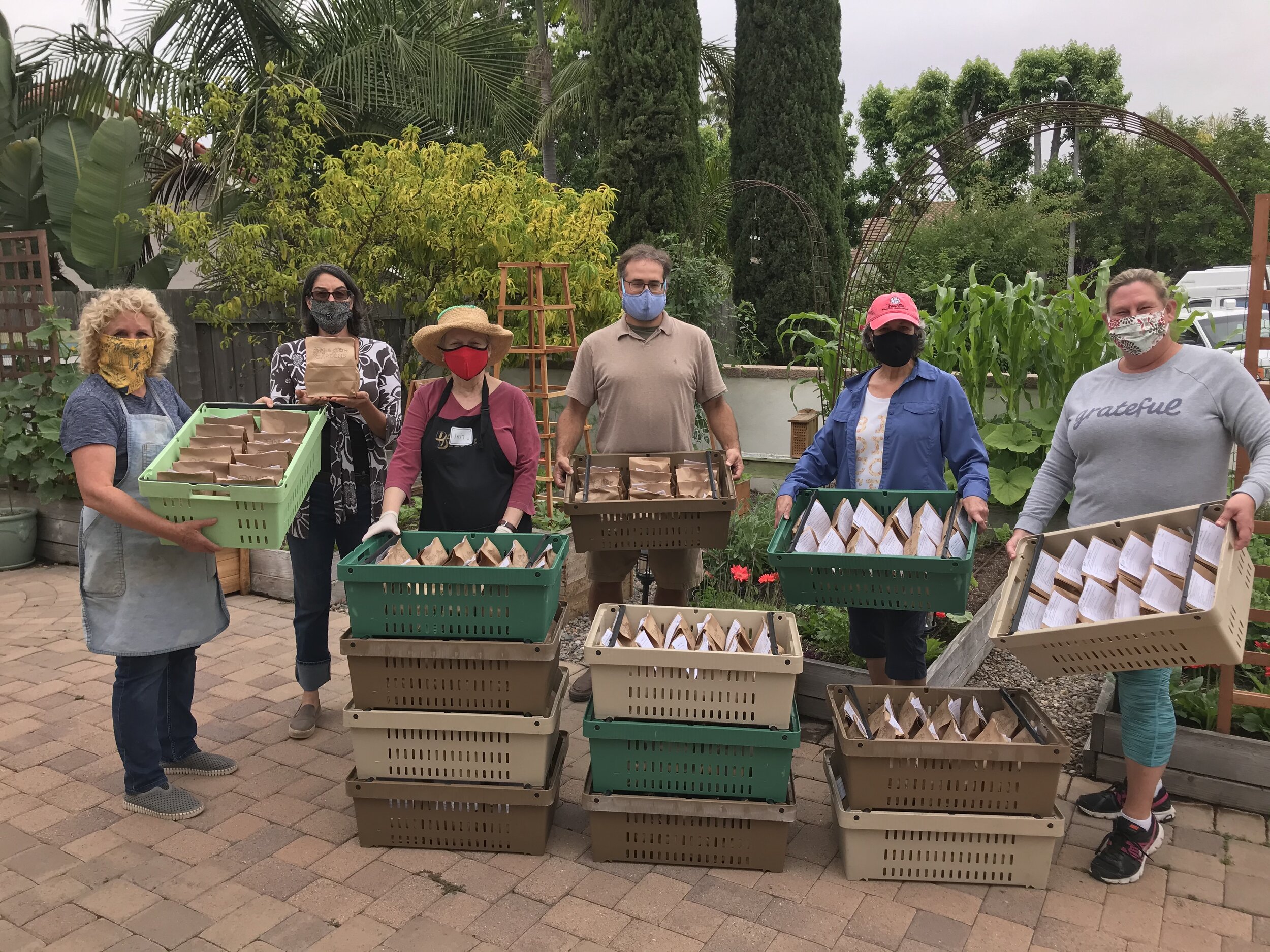
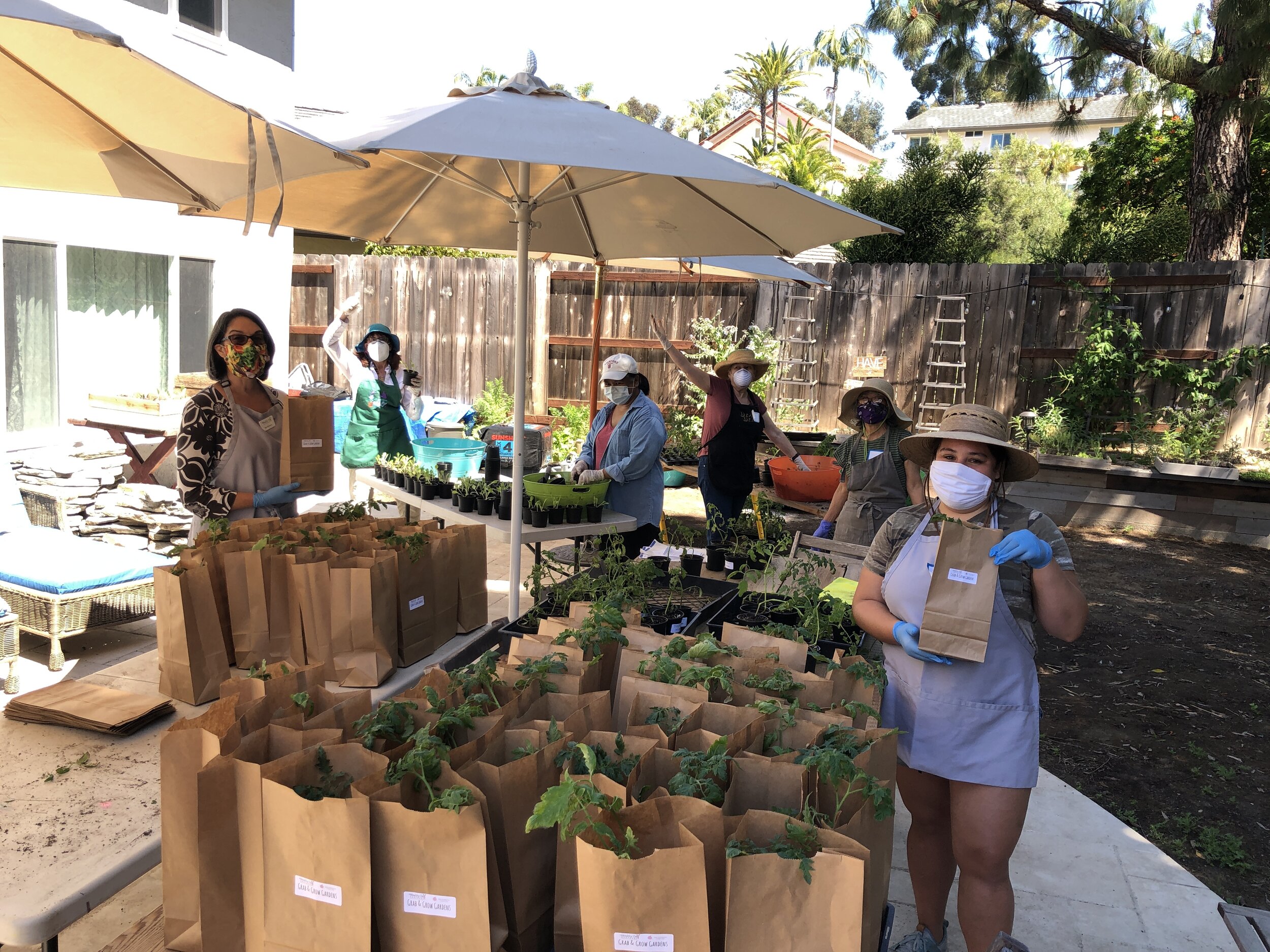
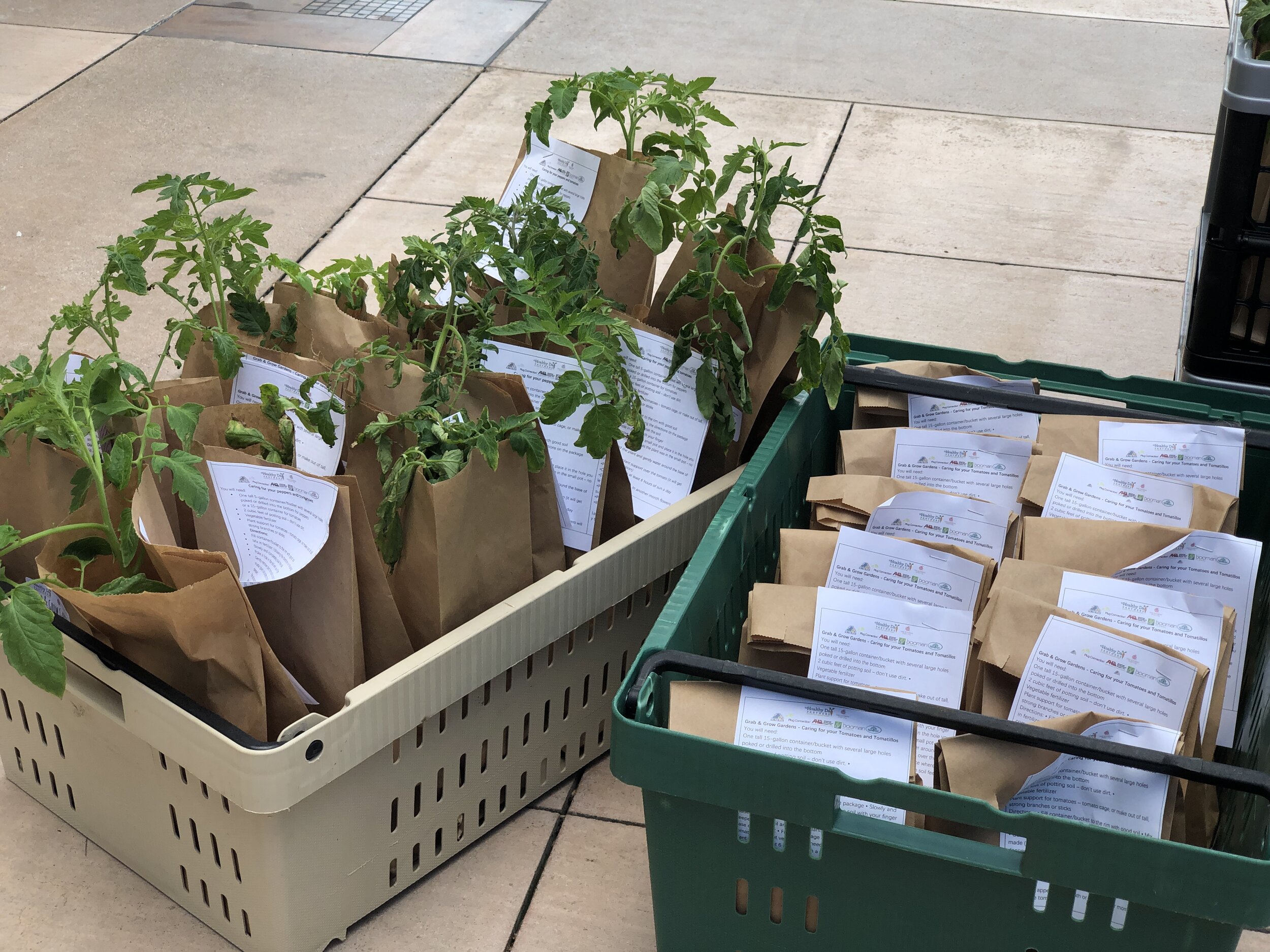
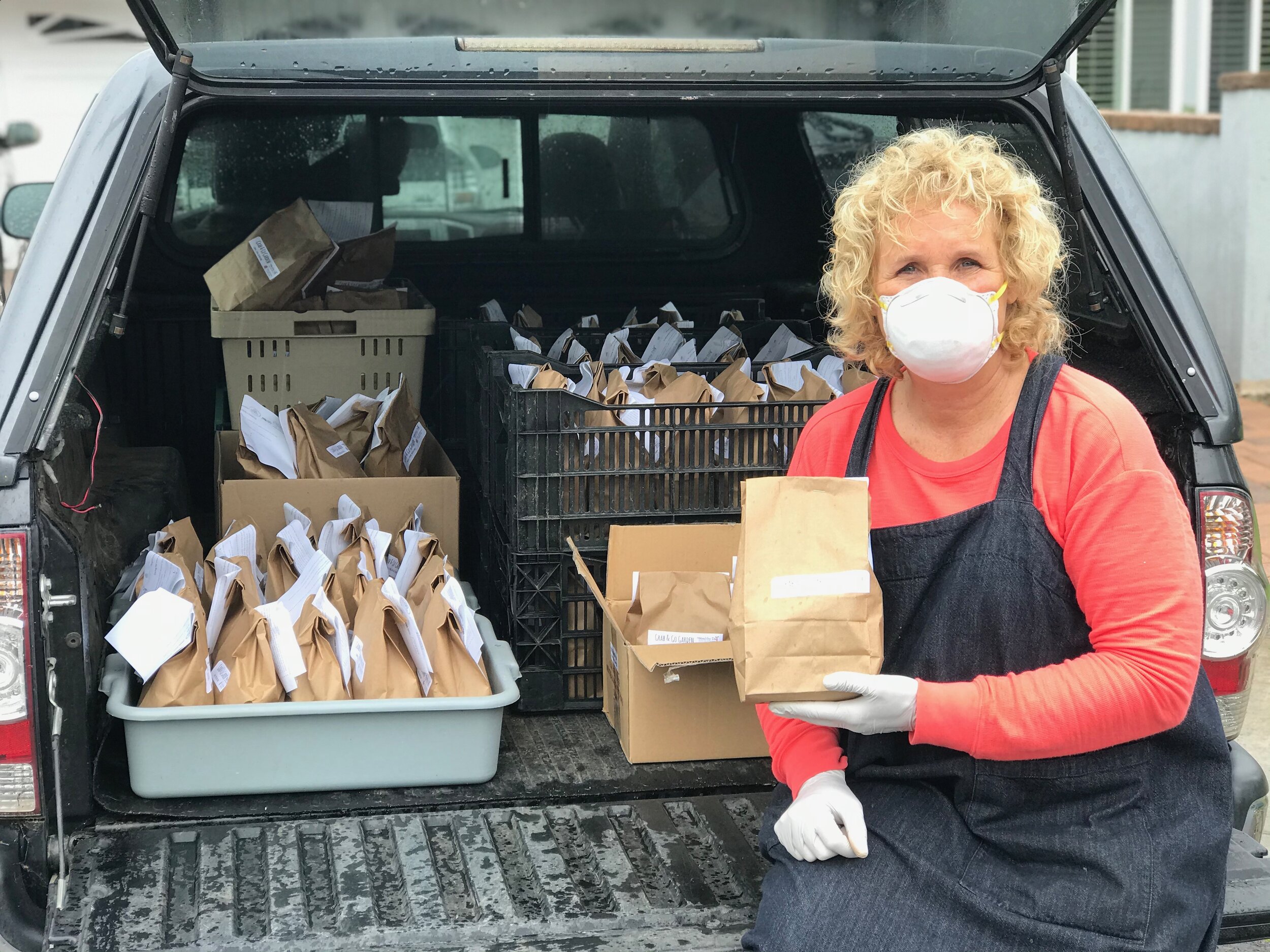
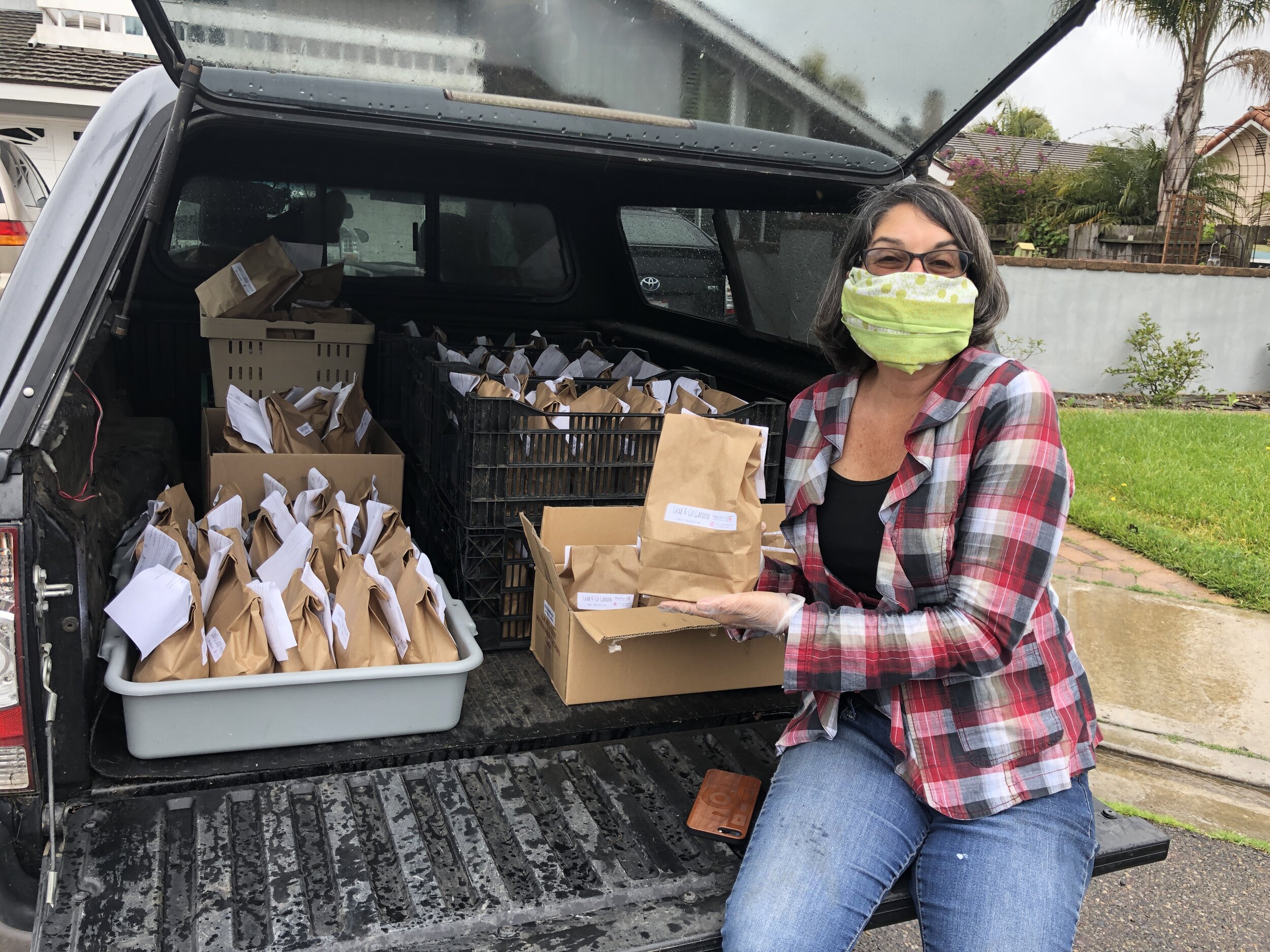
Crater Garden, Regenerative Farm and Family
This permaculture operation has neat features including a crater garden, food hedge, and chinampas.
Tim Southwell of ABC Acres in Montanna talks about a regenerative approach to farming, family, community—and about his crater garden.
“Our chickens know no boundaries.”
We head to Montana to chat with Tim Southwell of ABC Acres, the permaculture homestead he and his his wife Sarah created.
Southwell, who grew up in suburban Houston, explains that it was while living in Kansas City and growing a front-yard vegetable garden that he was introduced to permaculture and many of the concepts that he uses today on the farm.
In addition to livestock, they have a crater garden, a food hedge, chinampas, and a sunken greenhouse with citrus, bananas, figs, and papaya.
The unique microclimate created by the crater garden permits them to grow apples, peaches, plums, nectarines, and apricots in their harsh climate. He explains, “Every fruit tree we have, we build with it a microclimate.”
Crater Garden
Southwell says that the microclimate in the crater garden—a below-grade garden—is created by a number of things that work together:
The winter sun warms the south-facing slope of the garden.
Runoff from rain collects at the bottom of the garden, creating a pond—and the water in the pond collects heat that is then radiated at night.
The water reflects light onto plants in the surrounding crater garden.
Because the garden is below grade, cold winds pass over top of it.
While frost normally settles into low areas, it does not settle into the crater garden because the thermal mass of the water creates convection, so the air keeps moving.
Large rocks are partially submerged in the pond to act as “battery chargers” in the pond, adding to the thermal mass.
Food Hedge
The food hedge, which Southwell calls the “fedge,” provides privacy, blocks wind, attracts birds, and keeps livestock where they are supposed to be. Food plants in the fedge include:
brambles
sand cherry
serviceberry
goji
aronia
josta
honeyberry
“My children will be outside grazing the food hedge.”
Chinampas
Southwell explains that he was inspired by systems used by Aztec famers to create “chinampas” on a boggy section of flood plain.
He placed cottonwood logs on the low-lying ground, and then capped them with old hay and leaves, which decompose to create a rich soil. Over time, the decaying, spongy cottonwood logs help to wick moisture upwards.
He says that in this sort of situation it’s important to grow plants that don’t mind moisture. Raspberries grow well for them.
Agritourism
Agritourism become an income generator on the farm in 2017. Southwell noticed a big appetite for opportunities to connect with farms, food production, and nature.
But he felt that farms, and the stories behind them, were poorly represented online. He and Sarah created the online platform yonder.com as a way for to connect people with nature.

